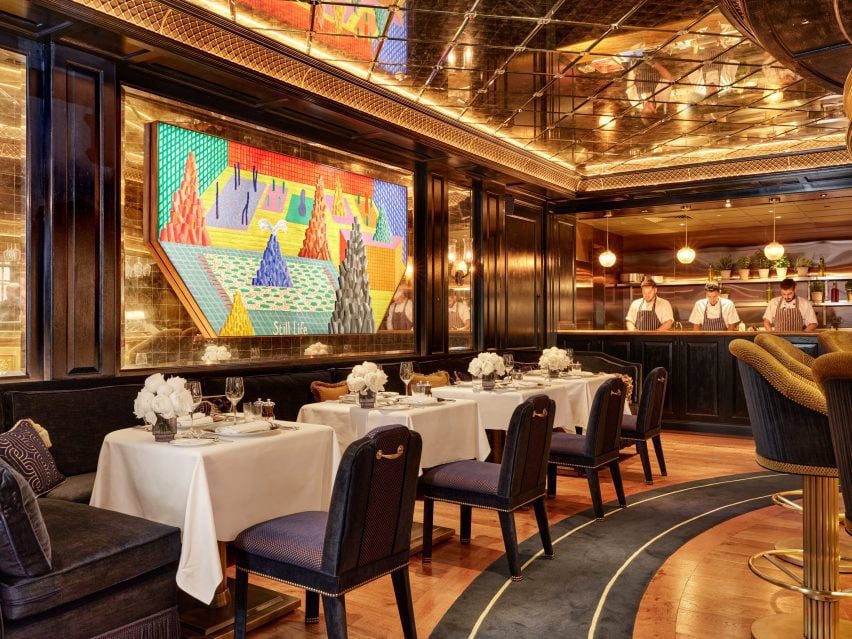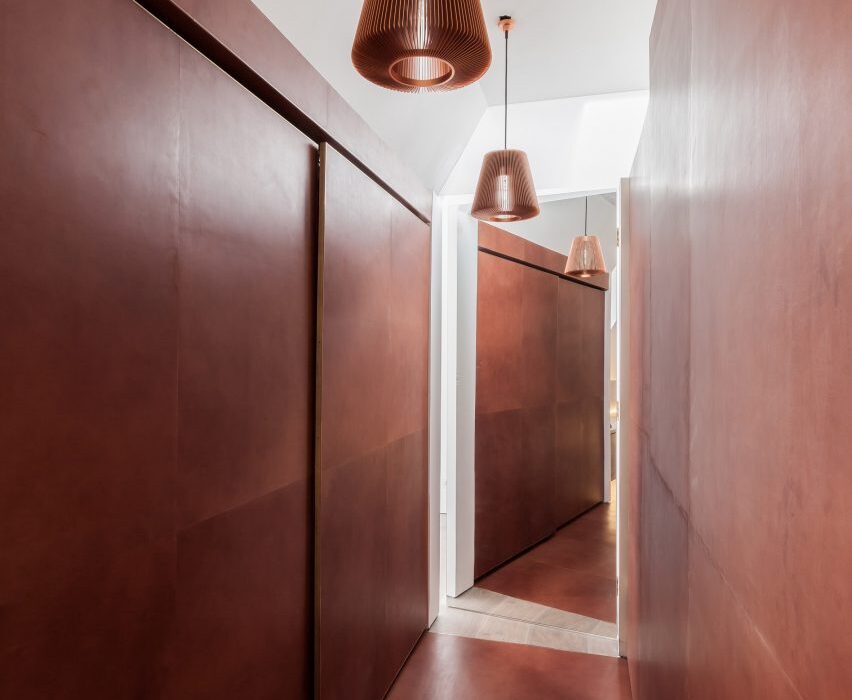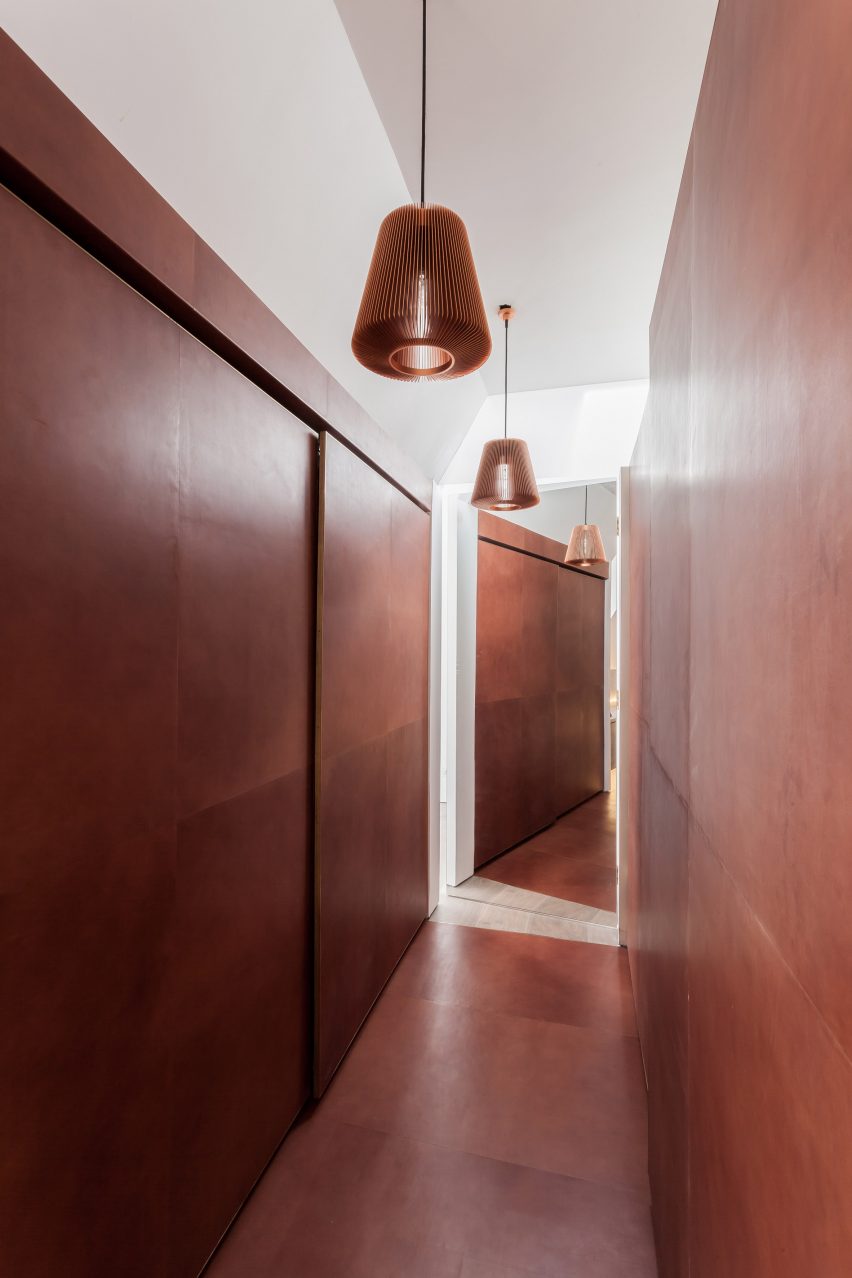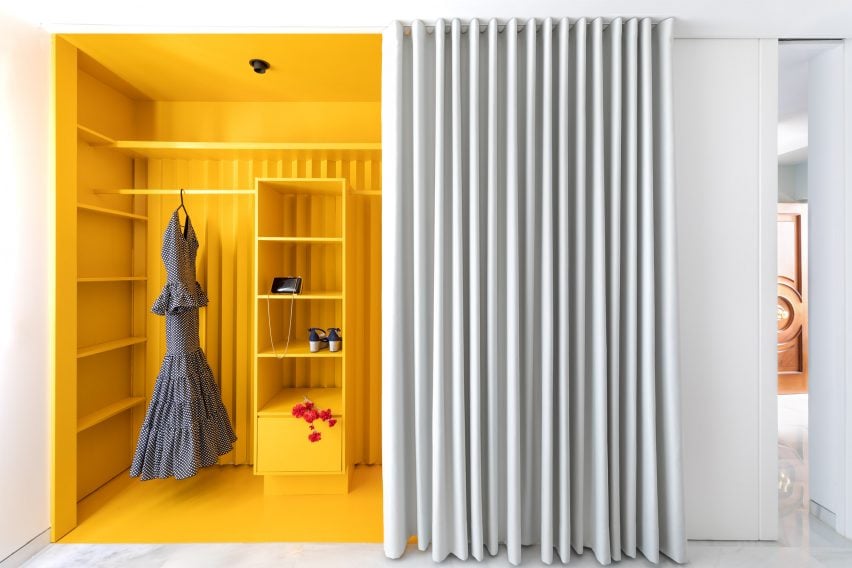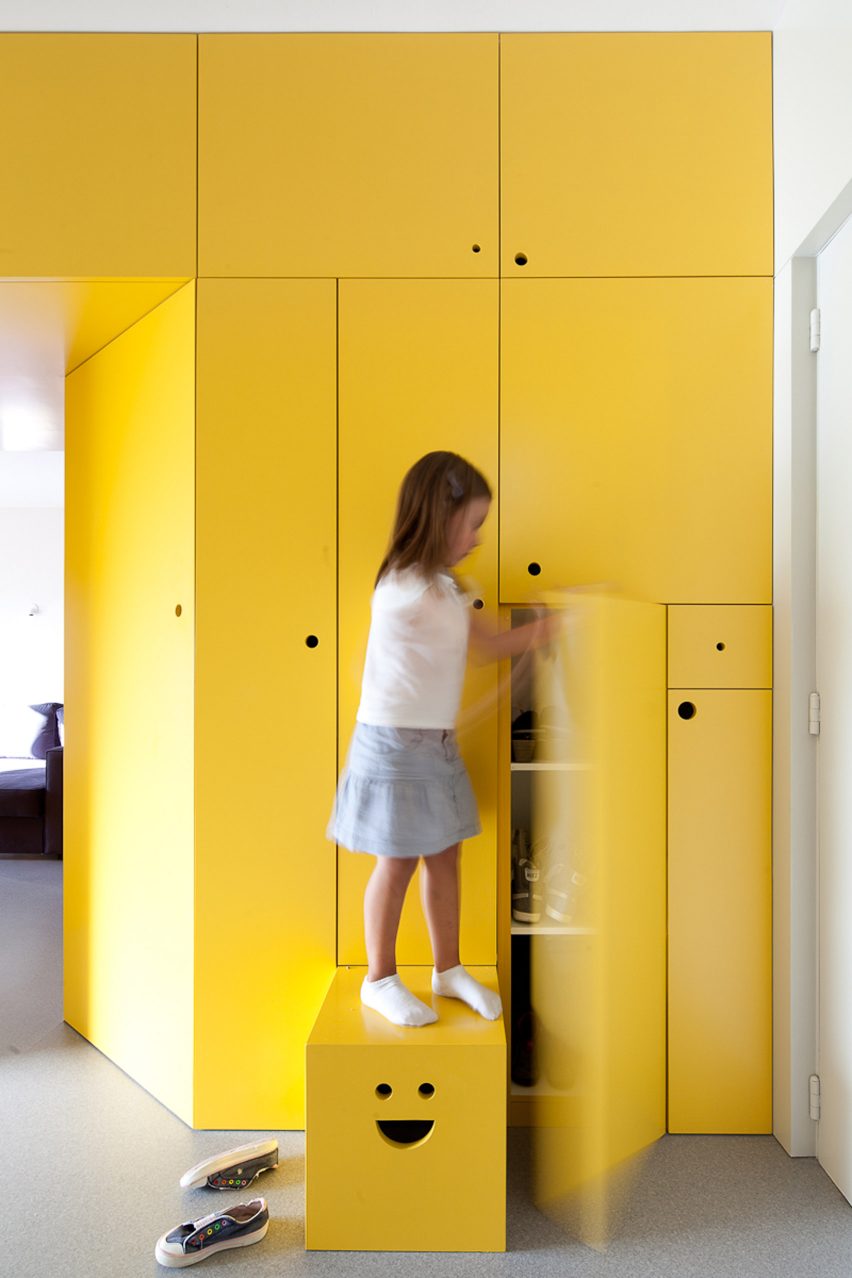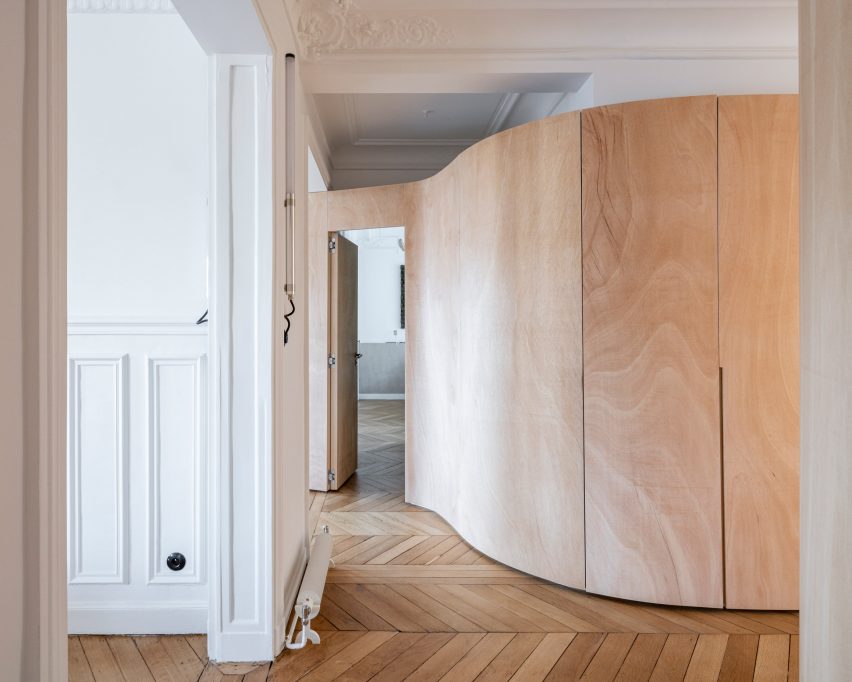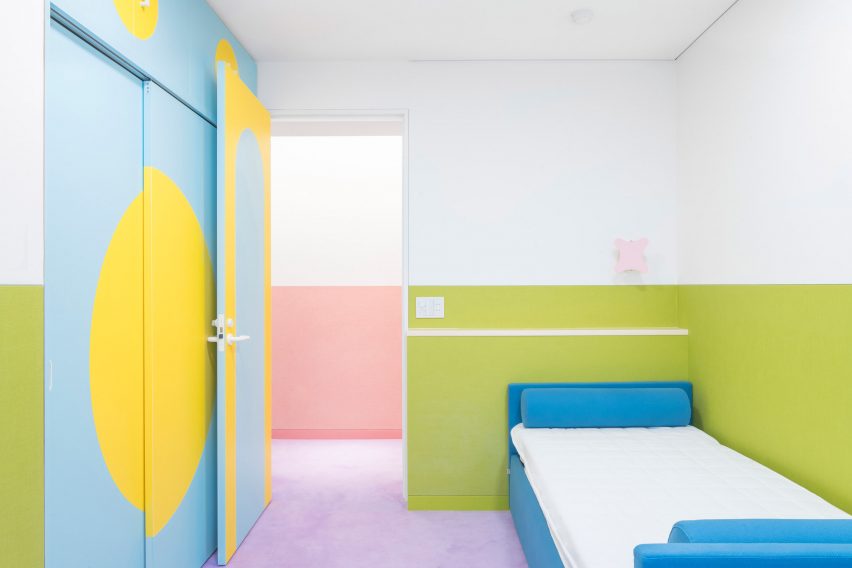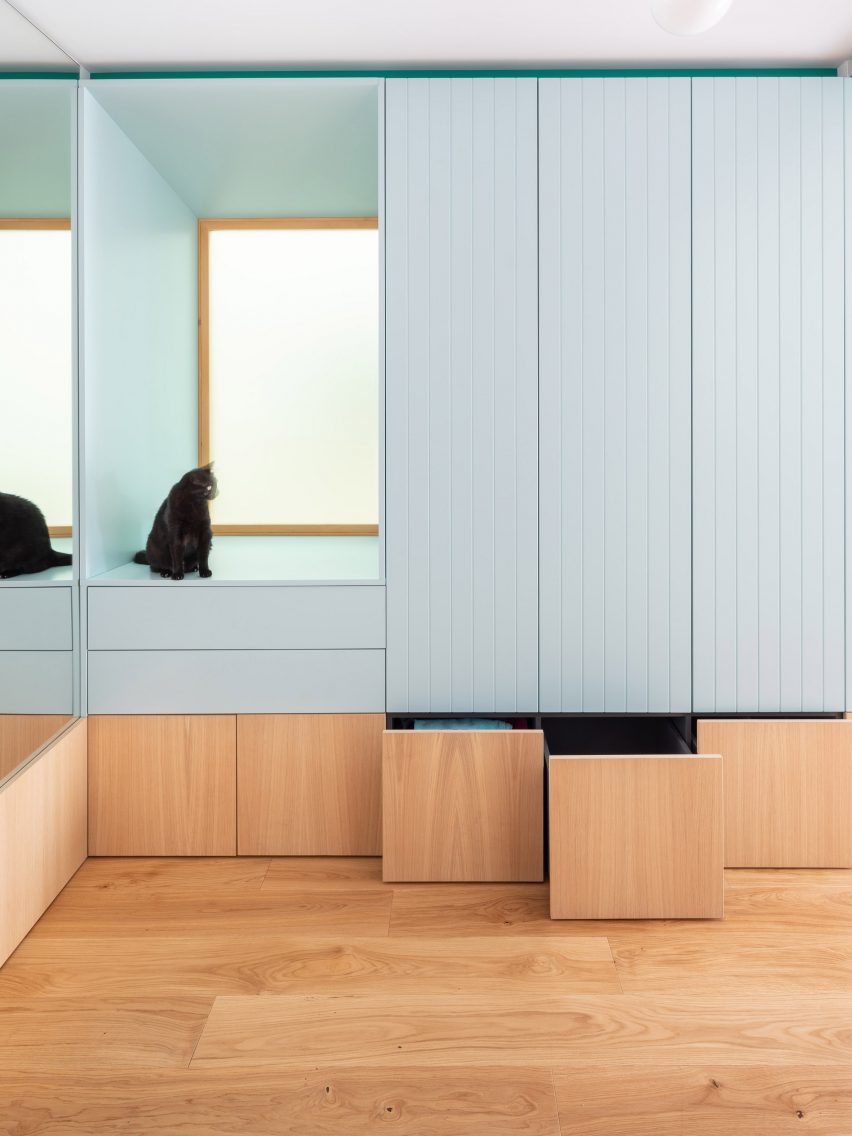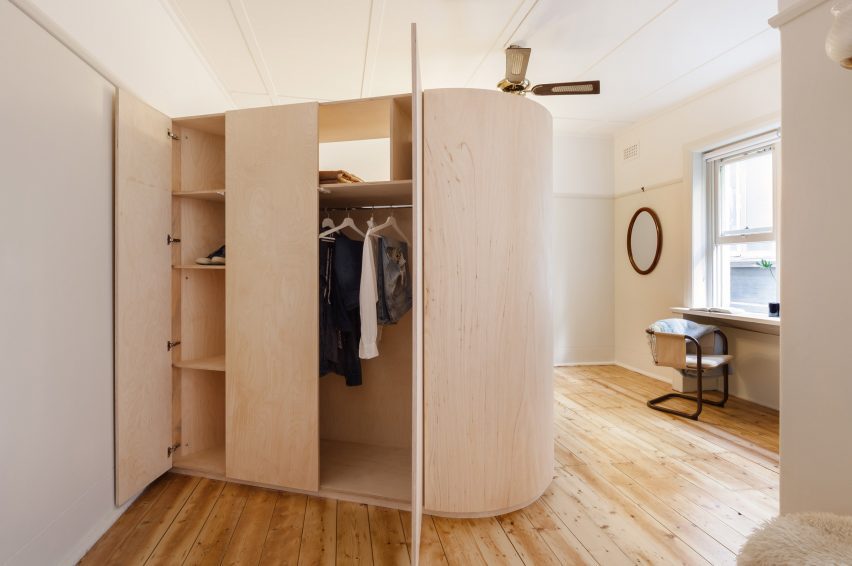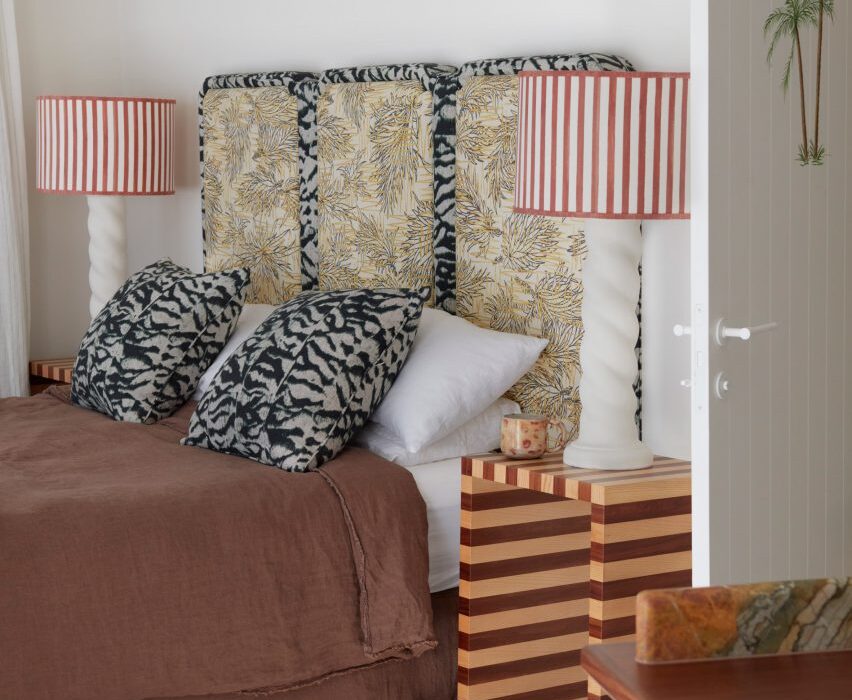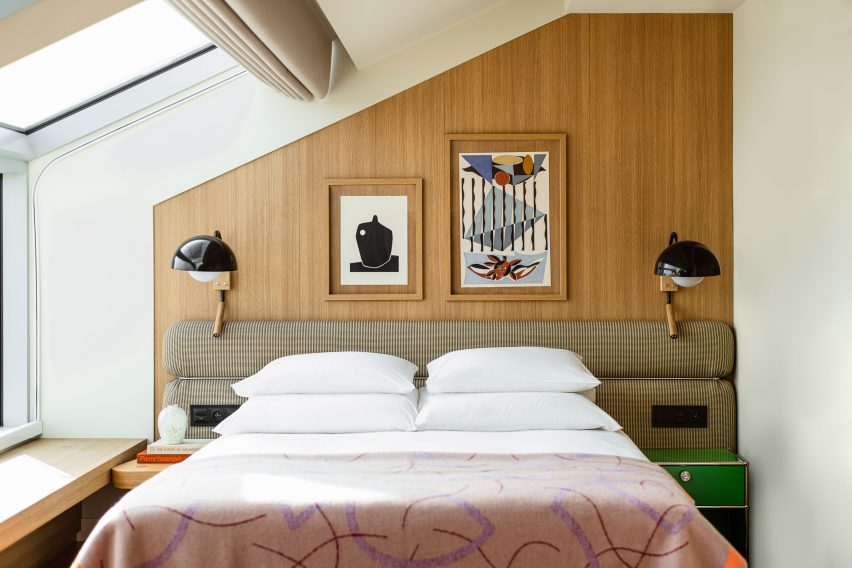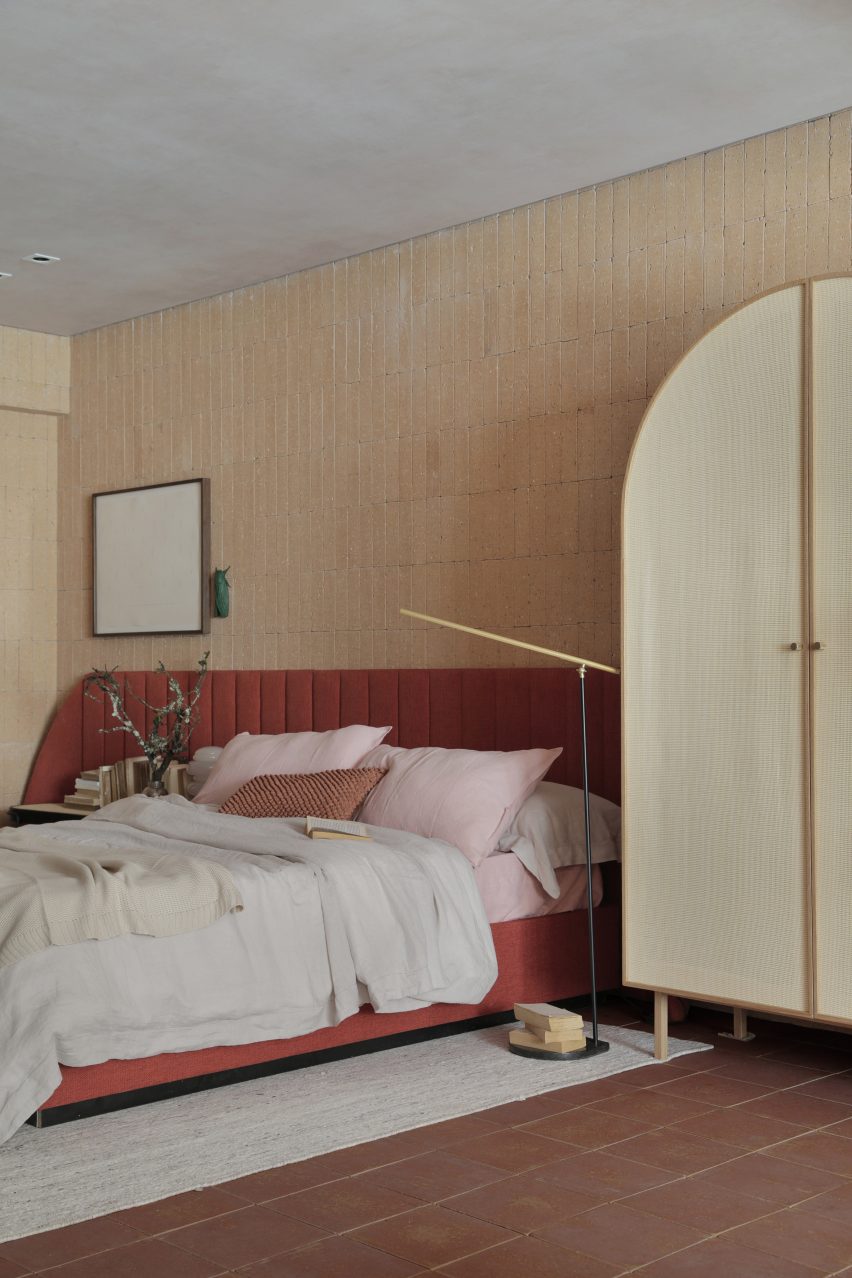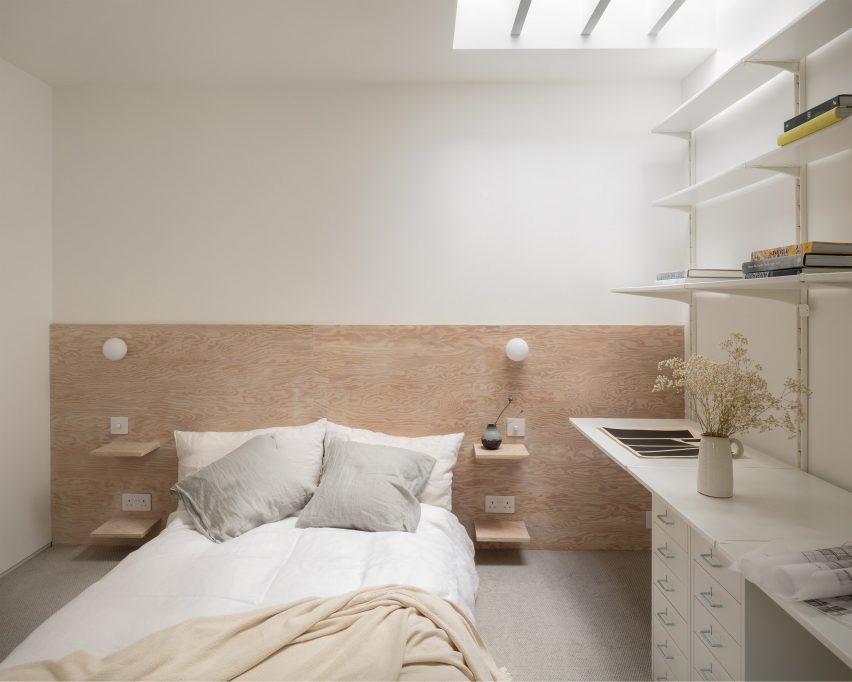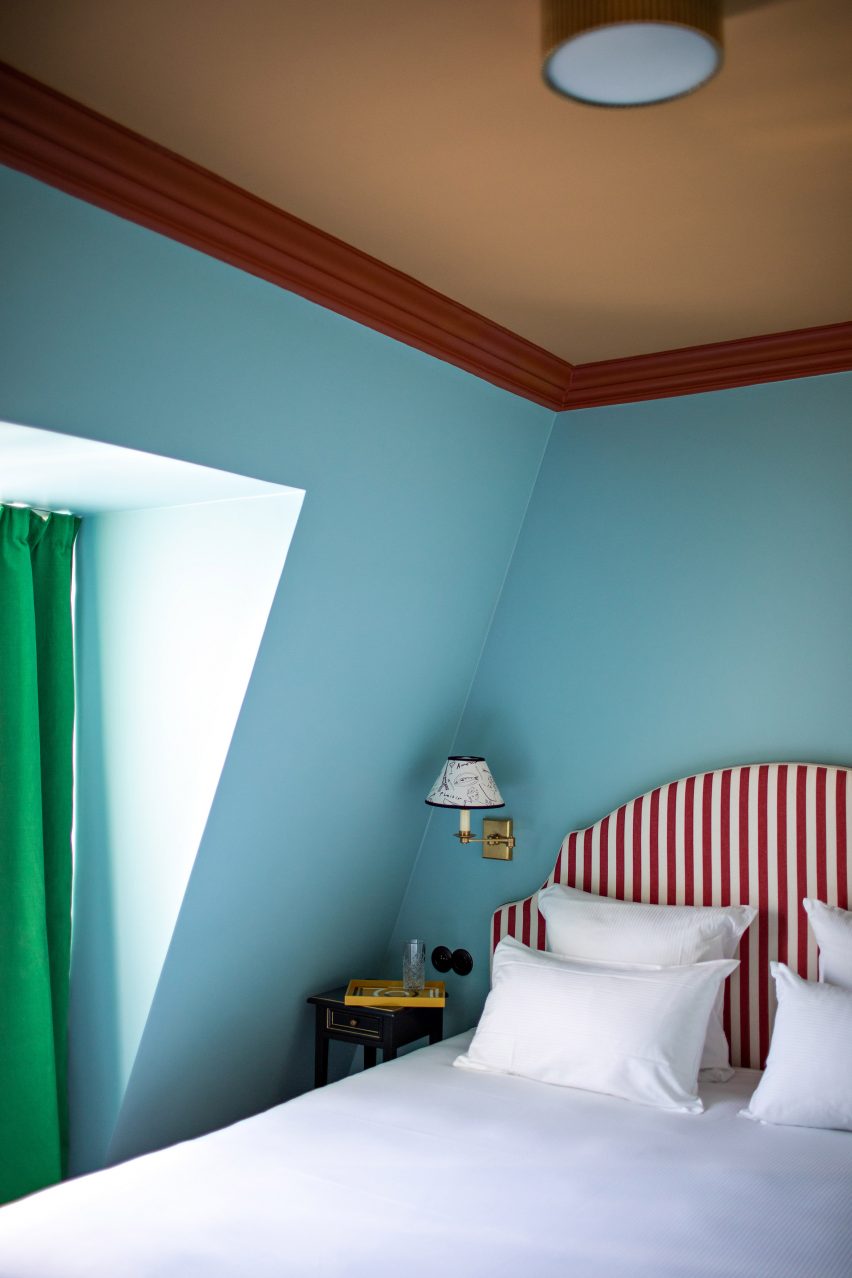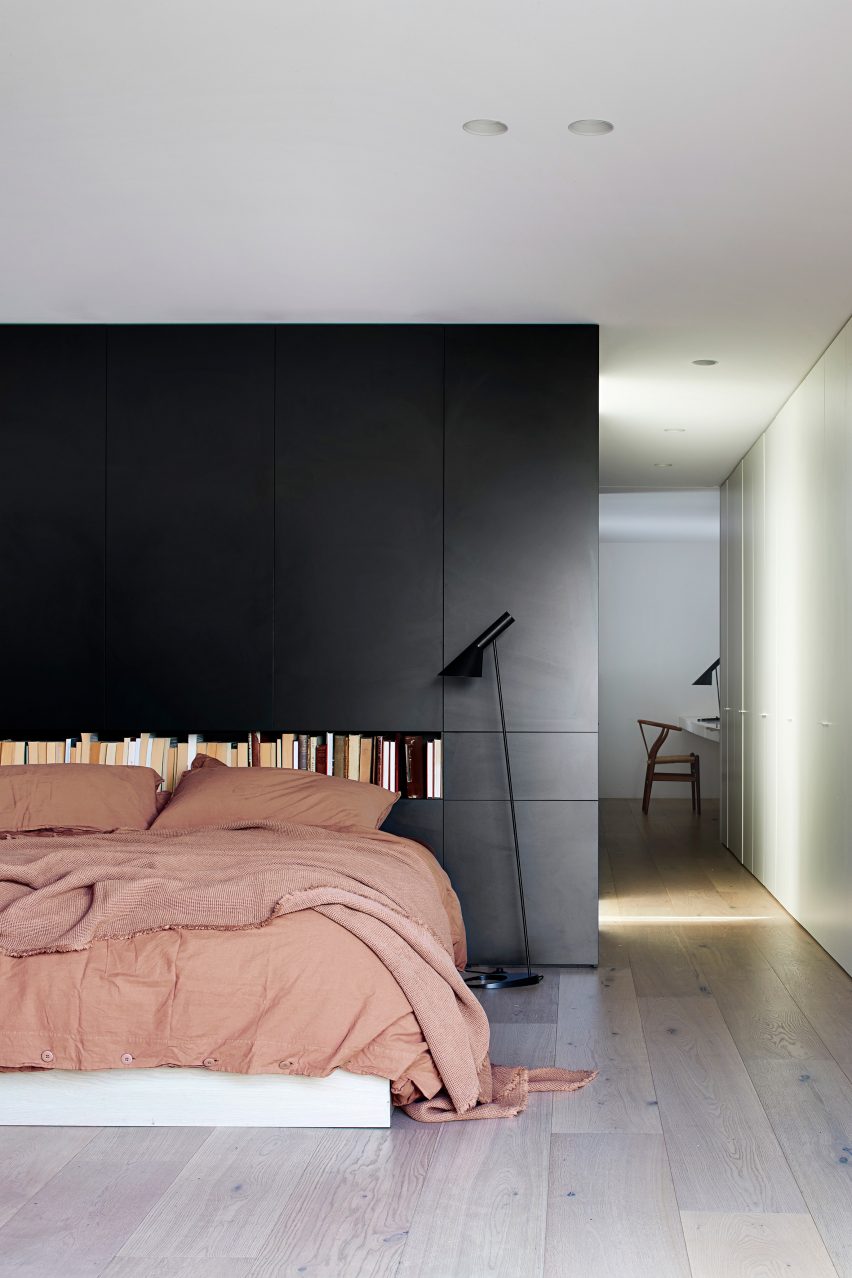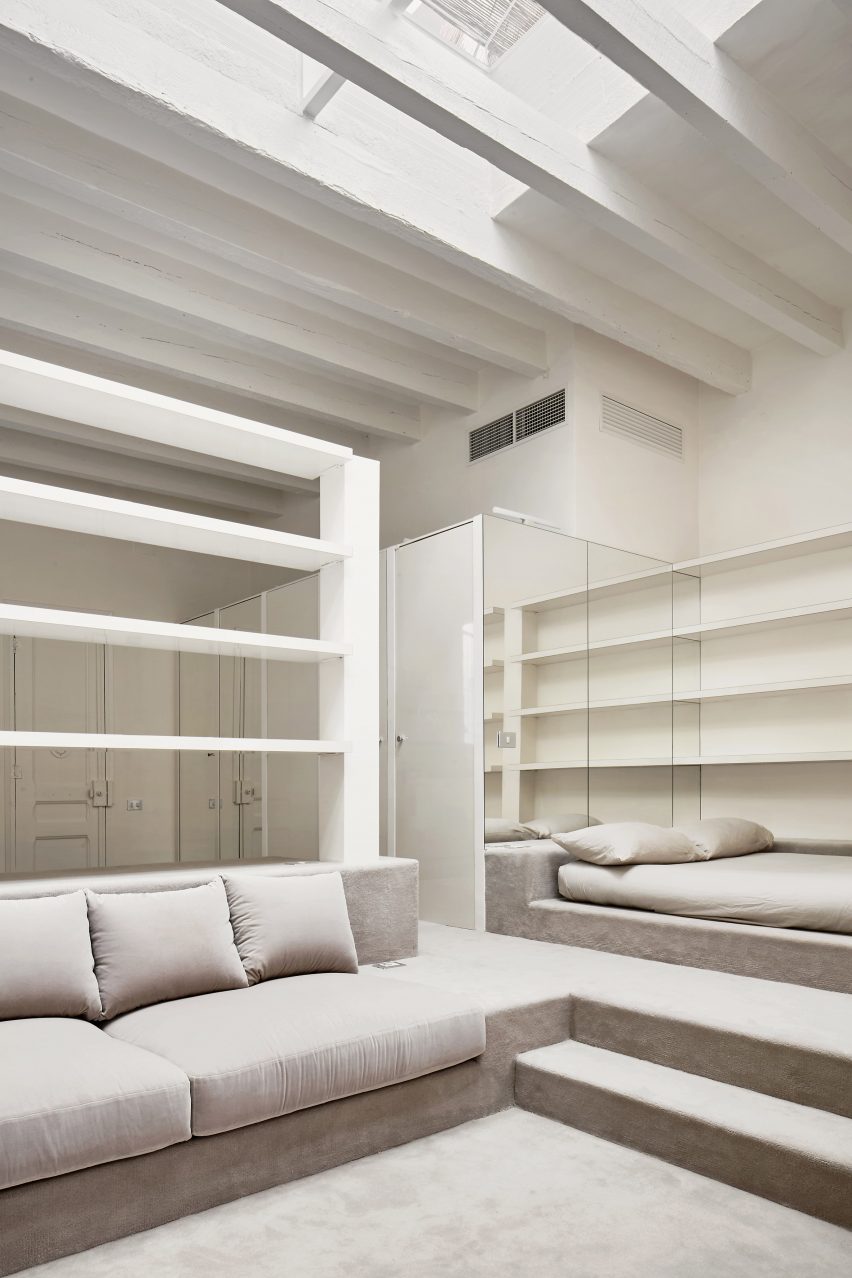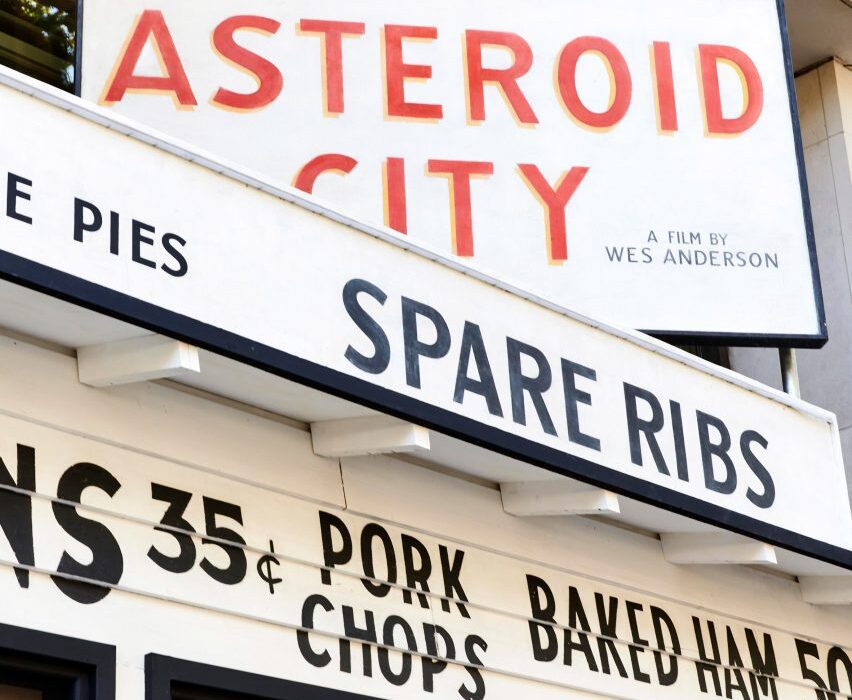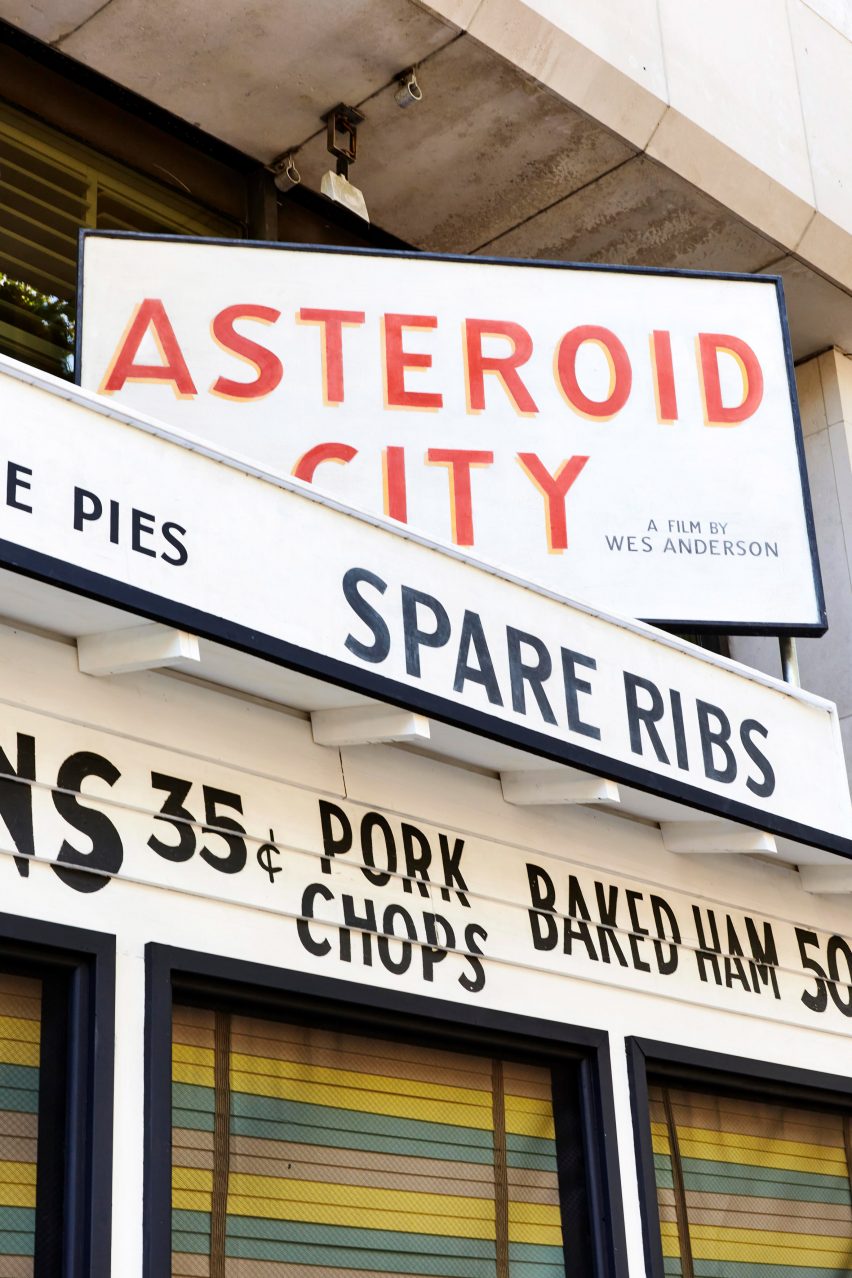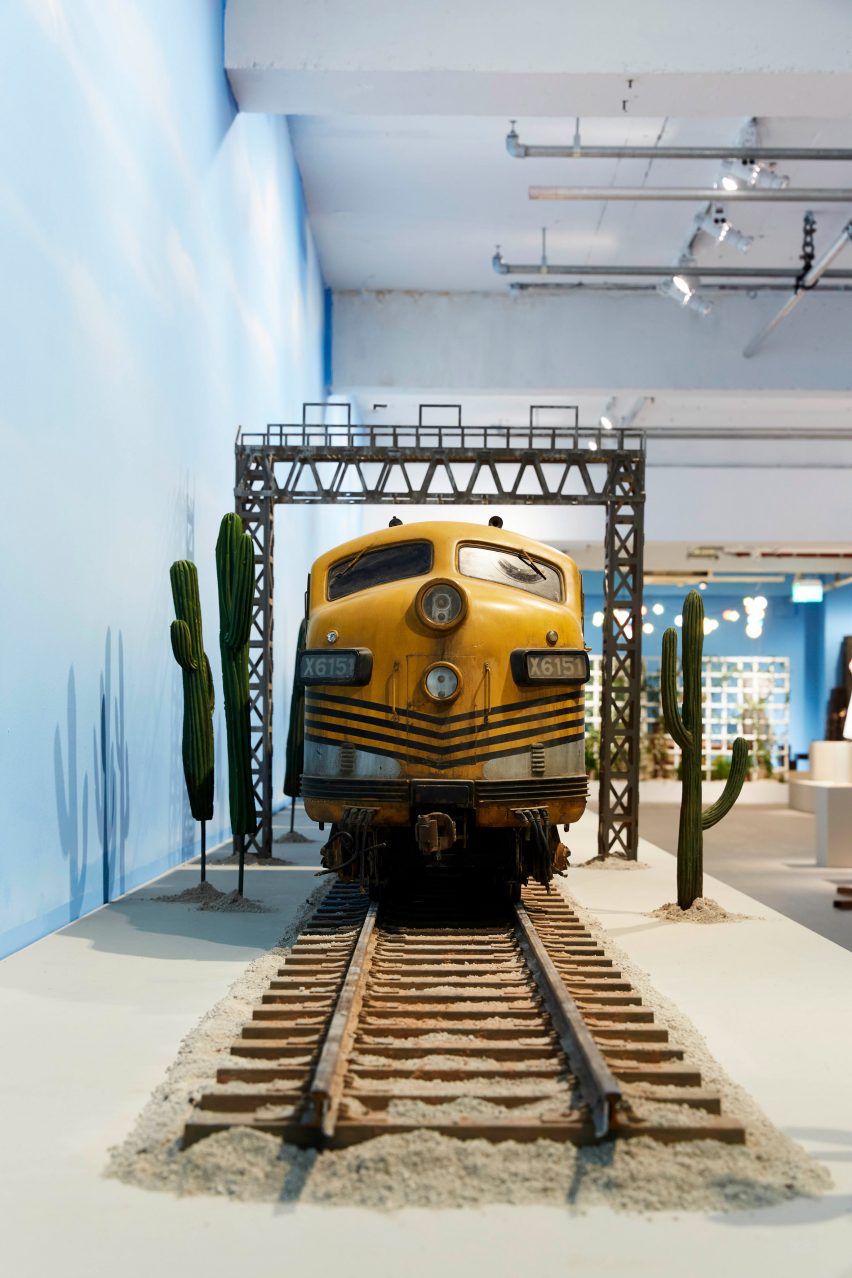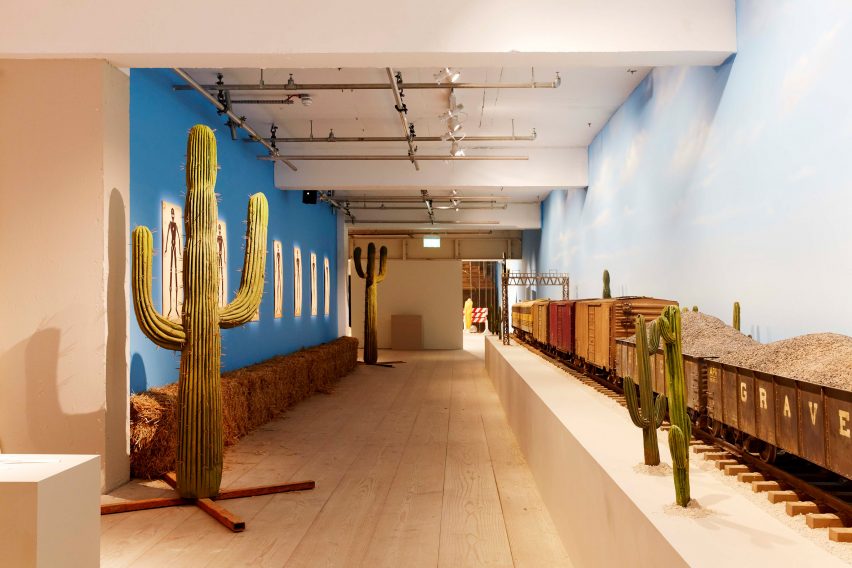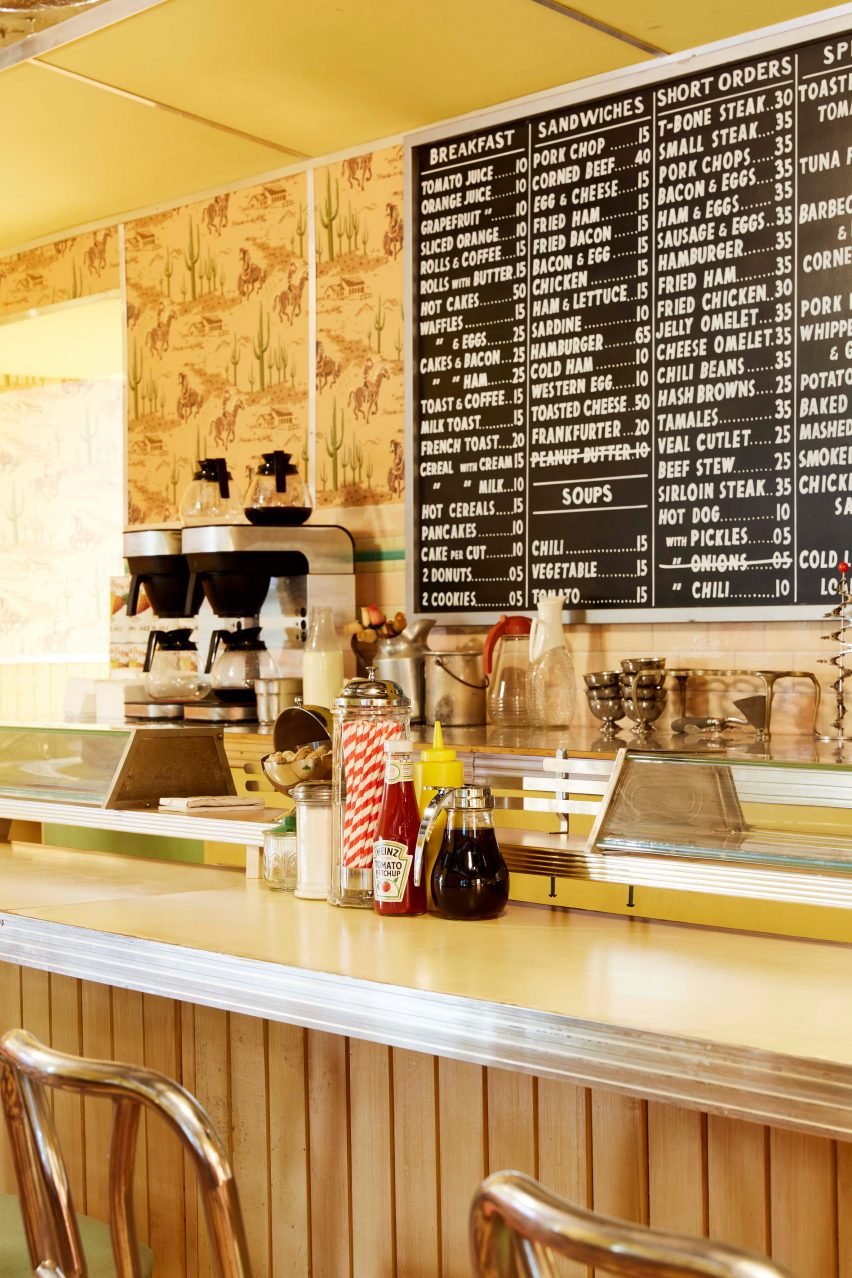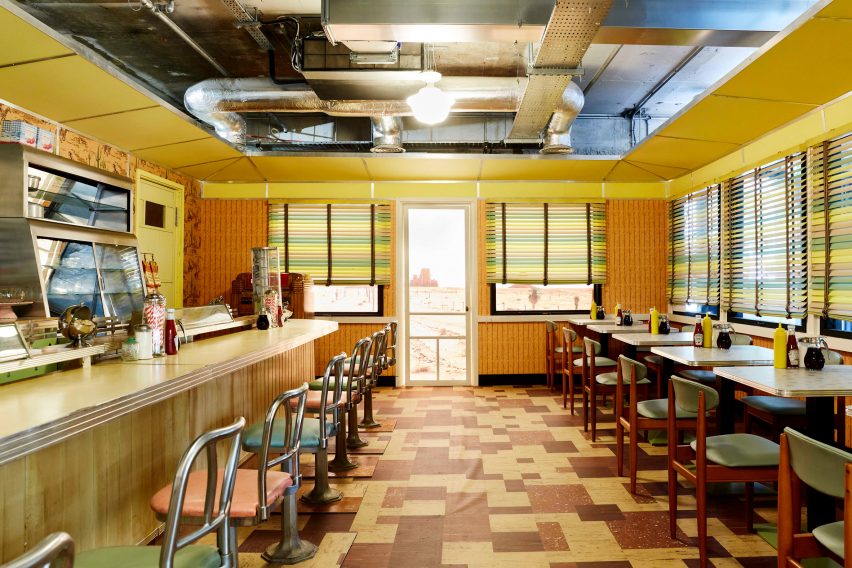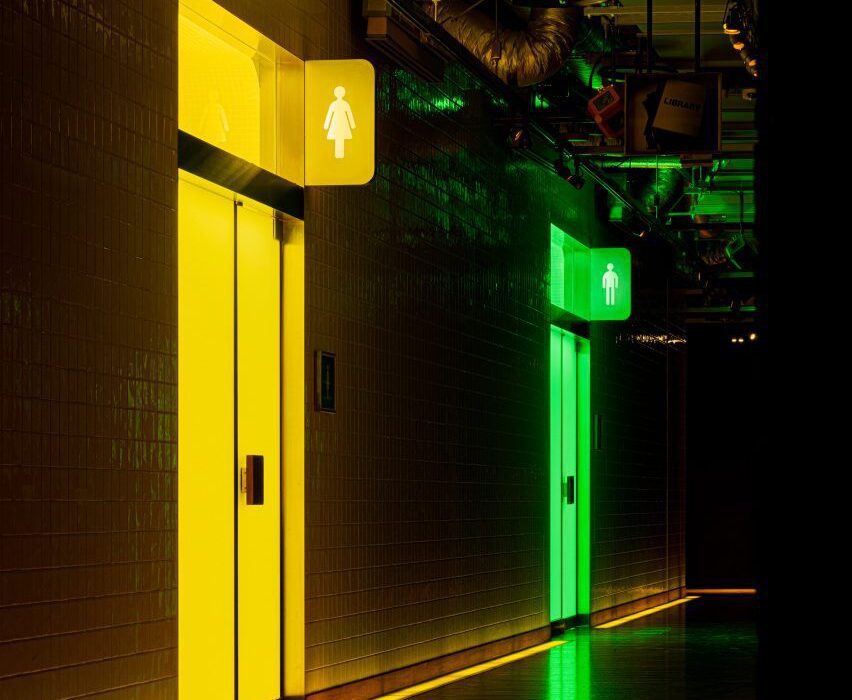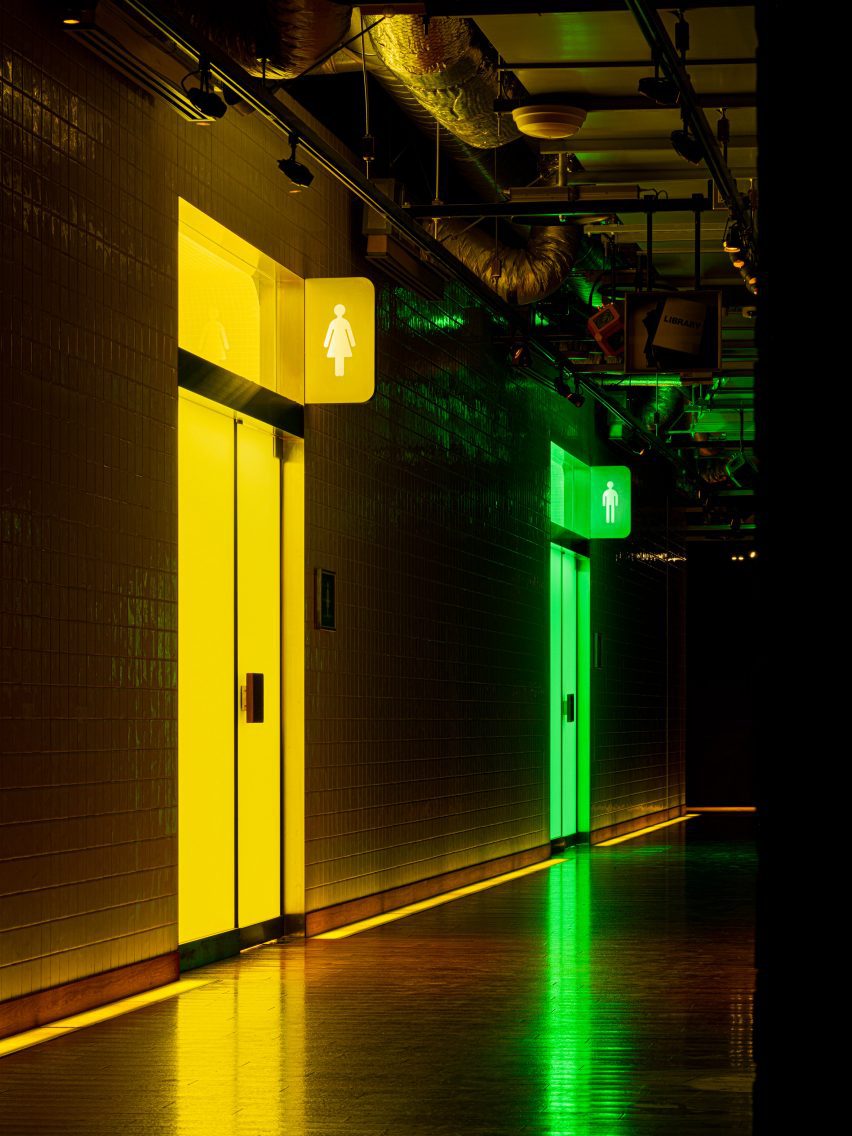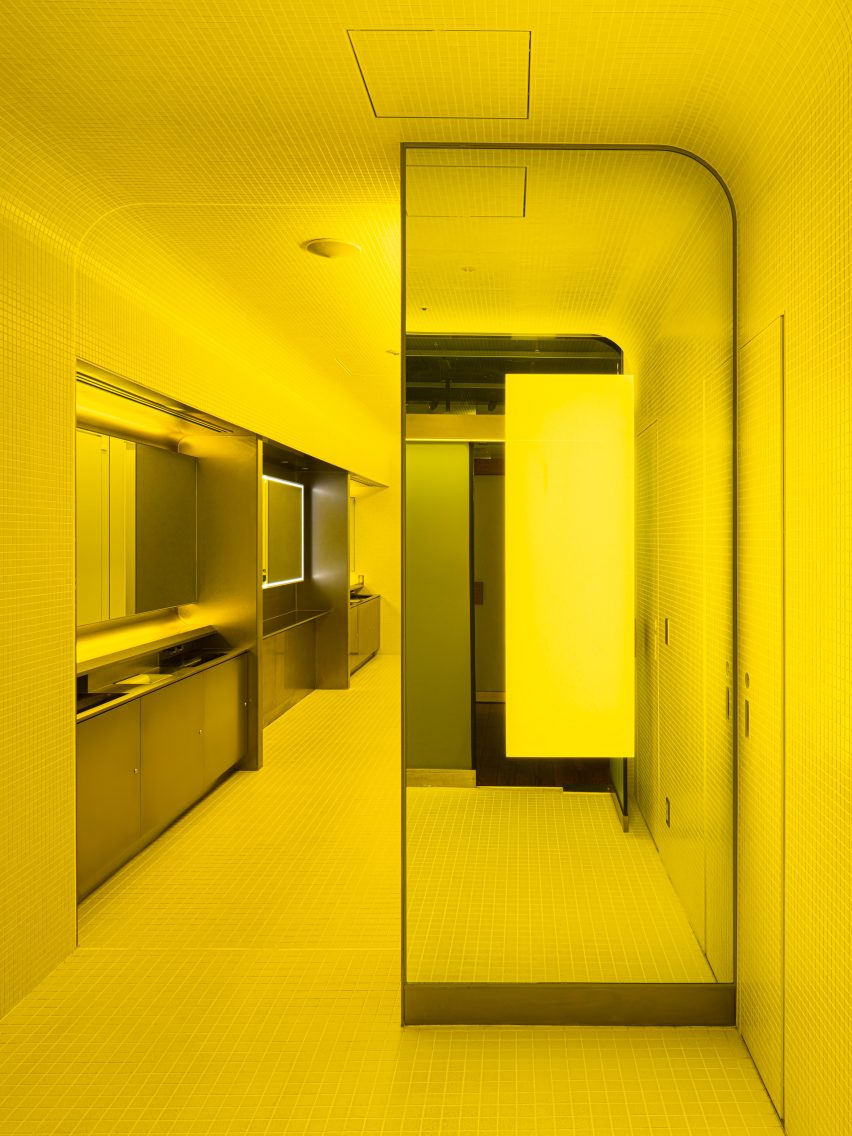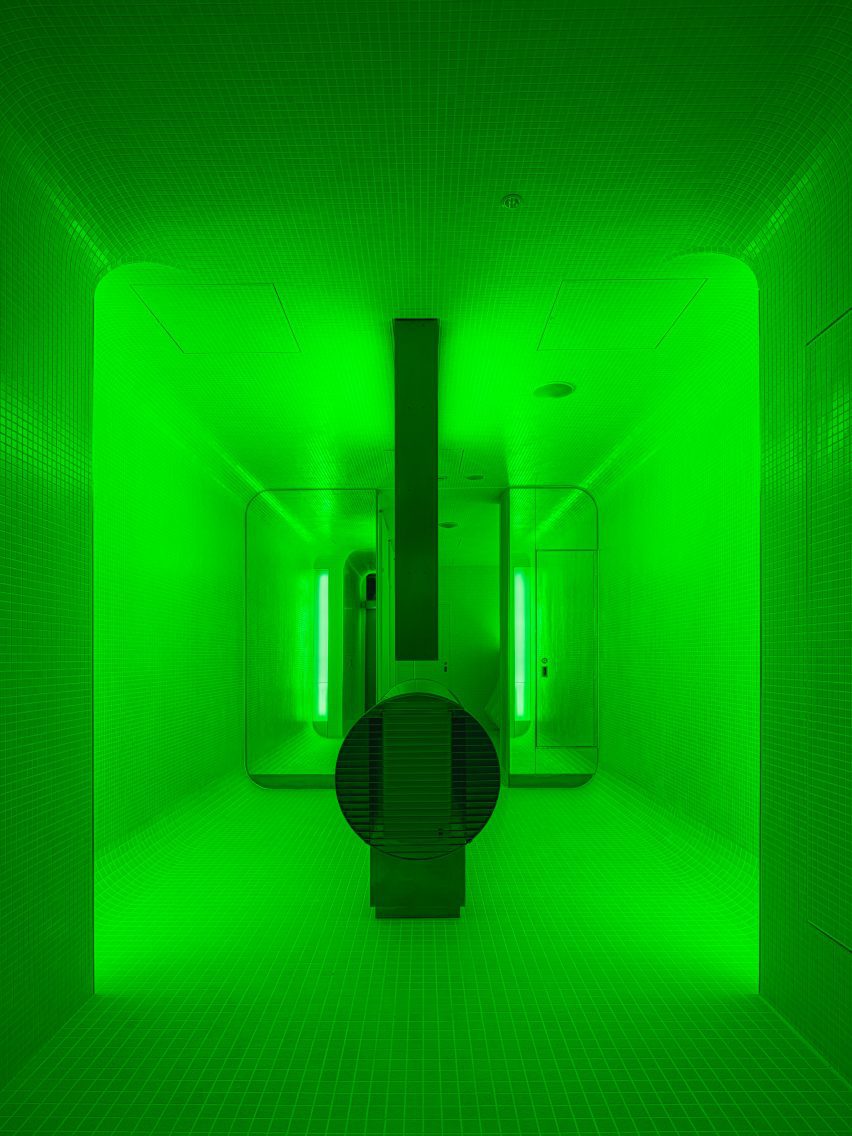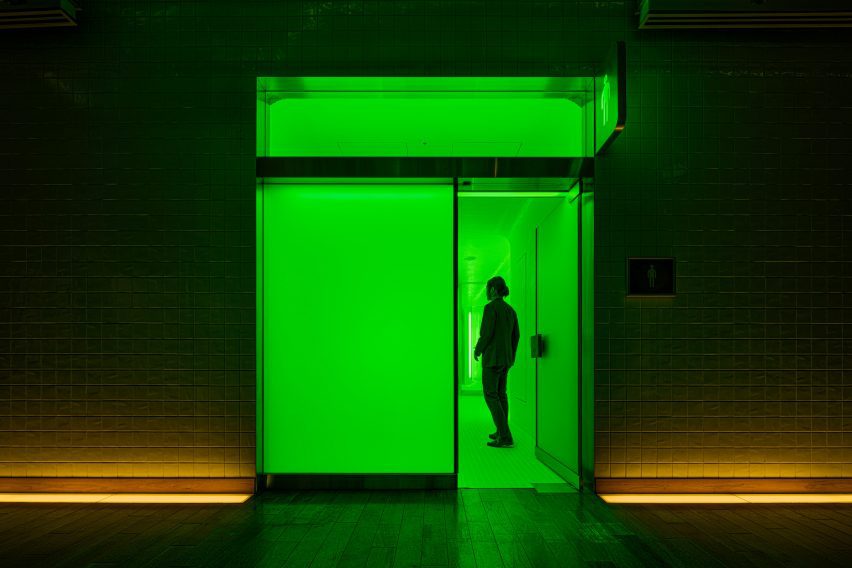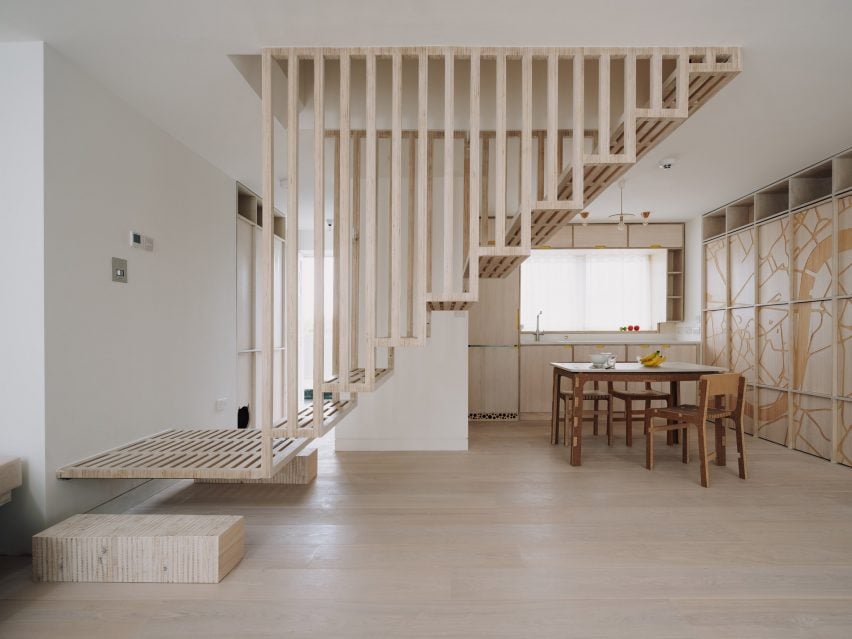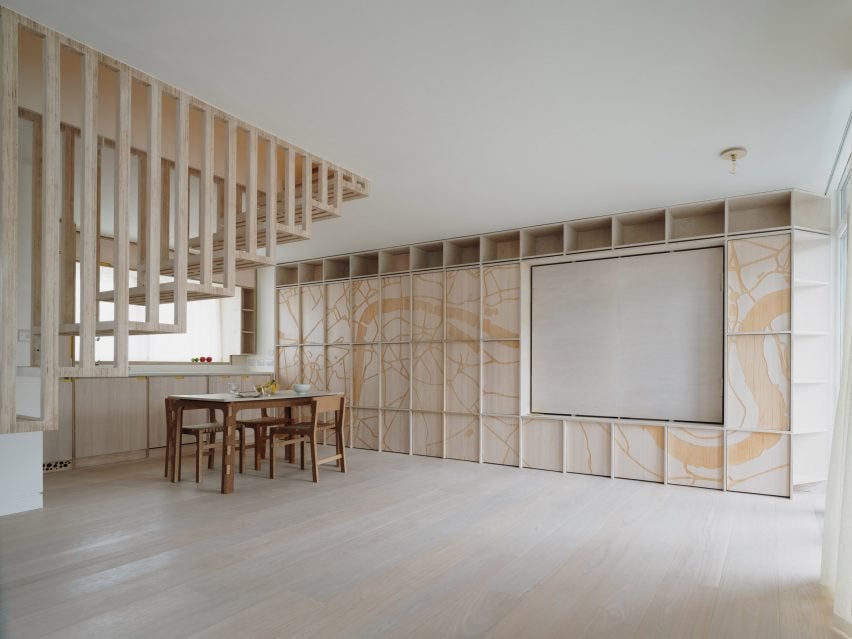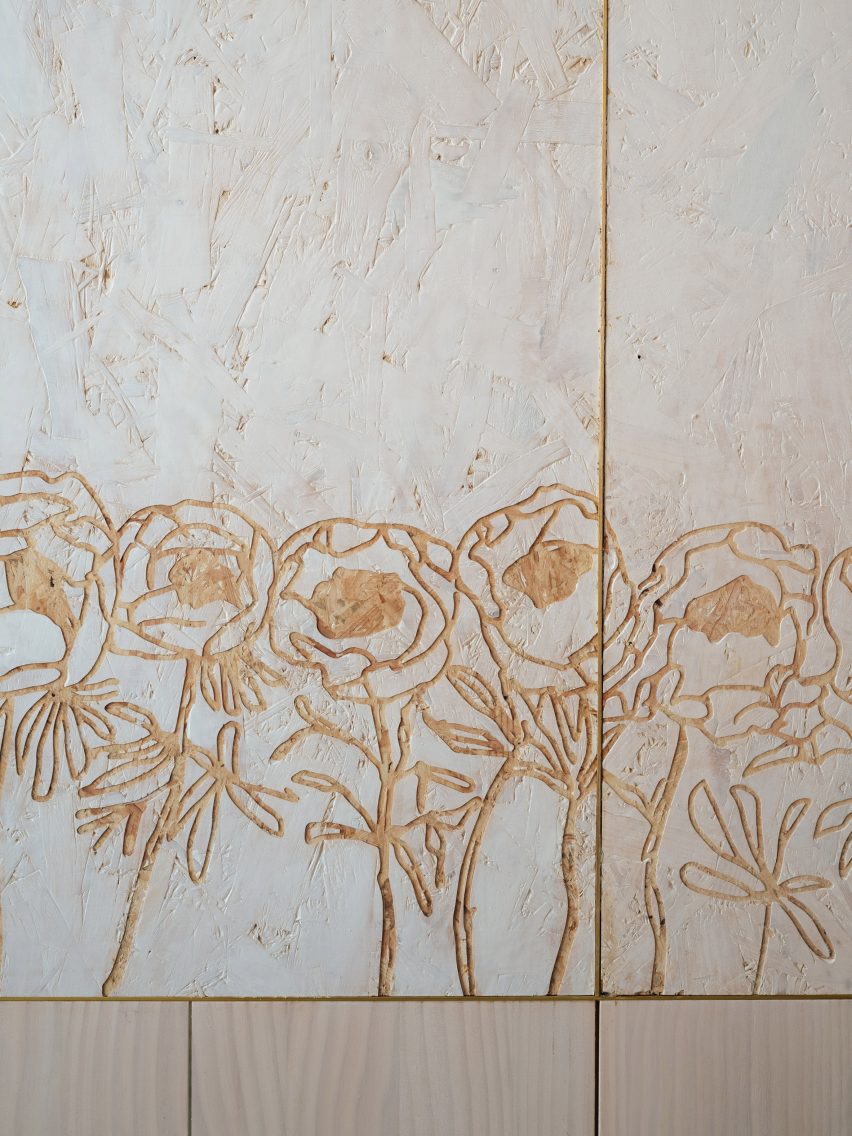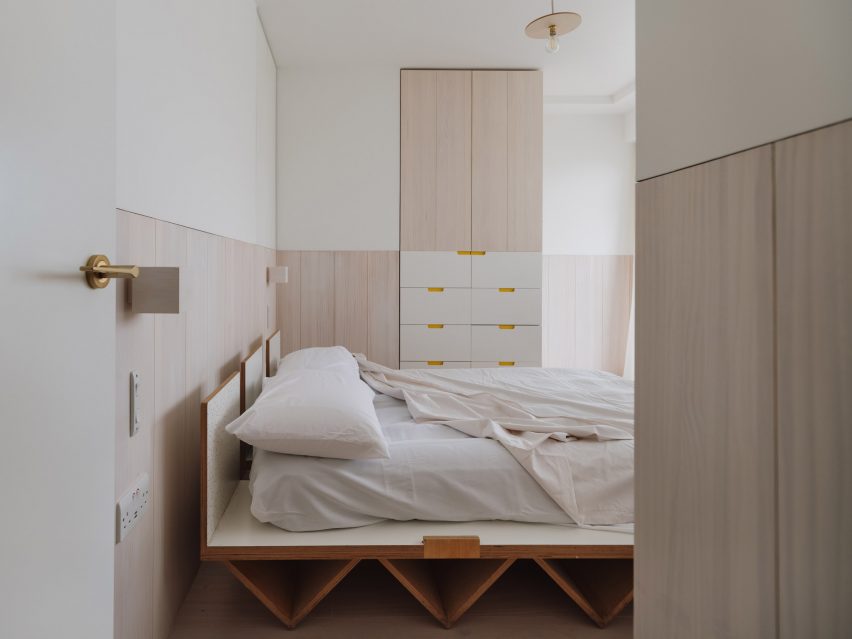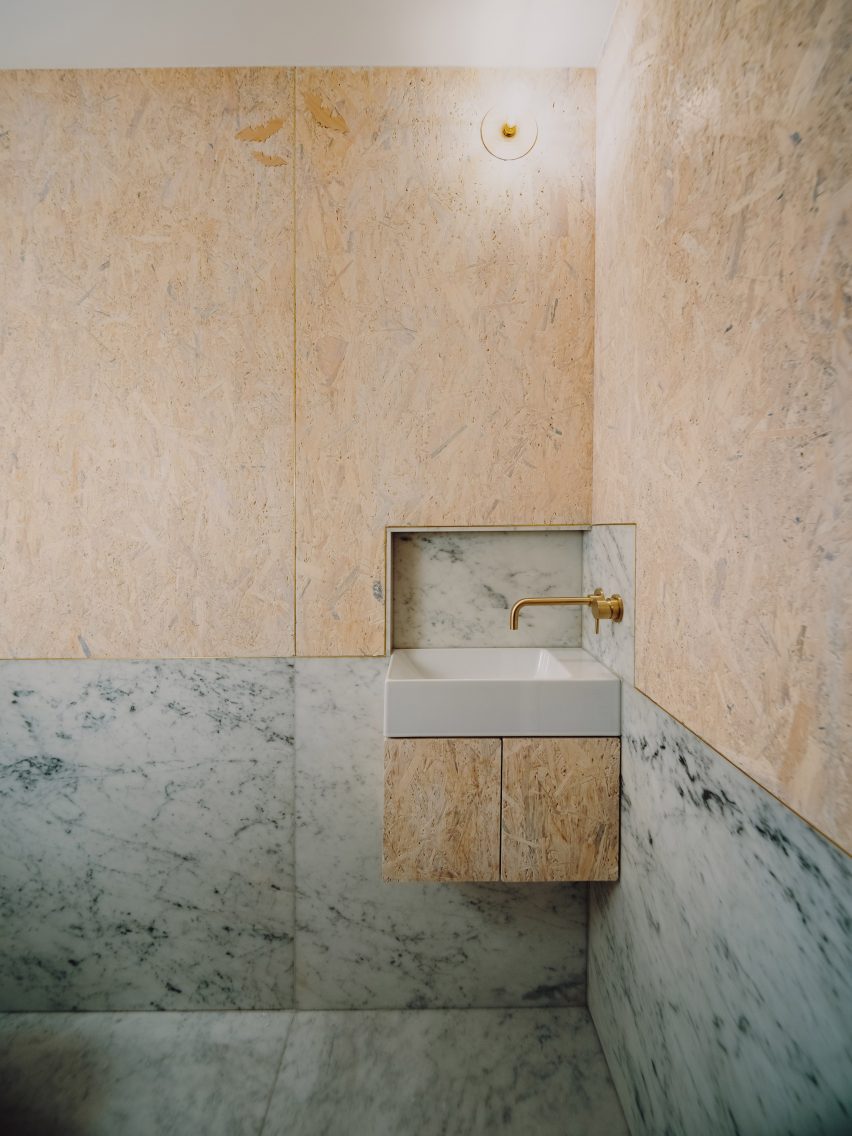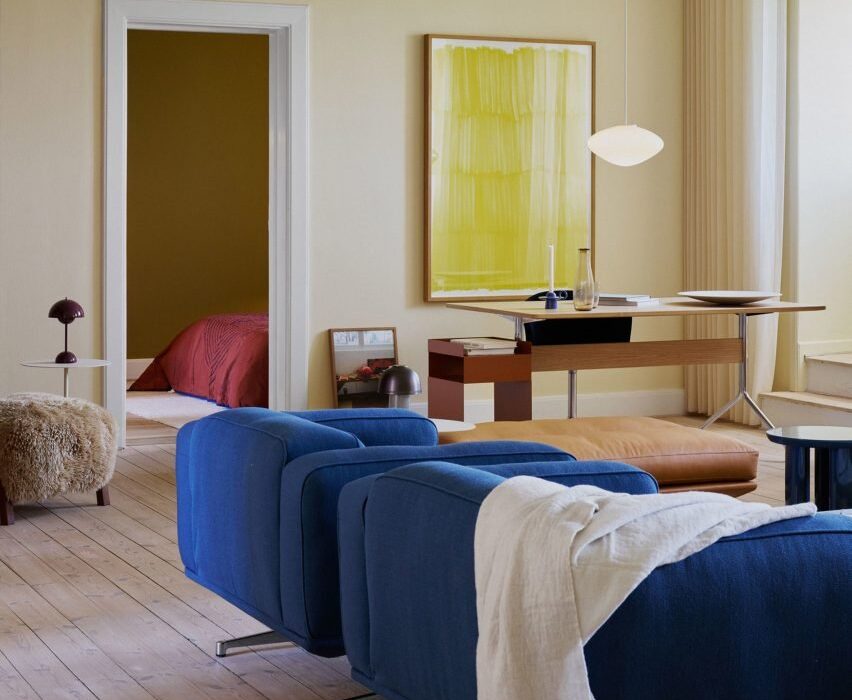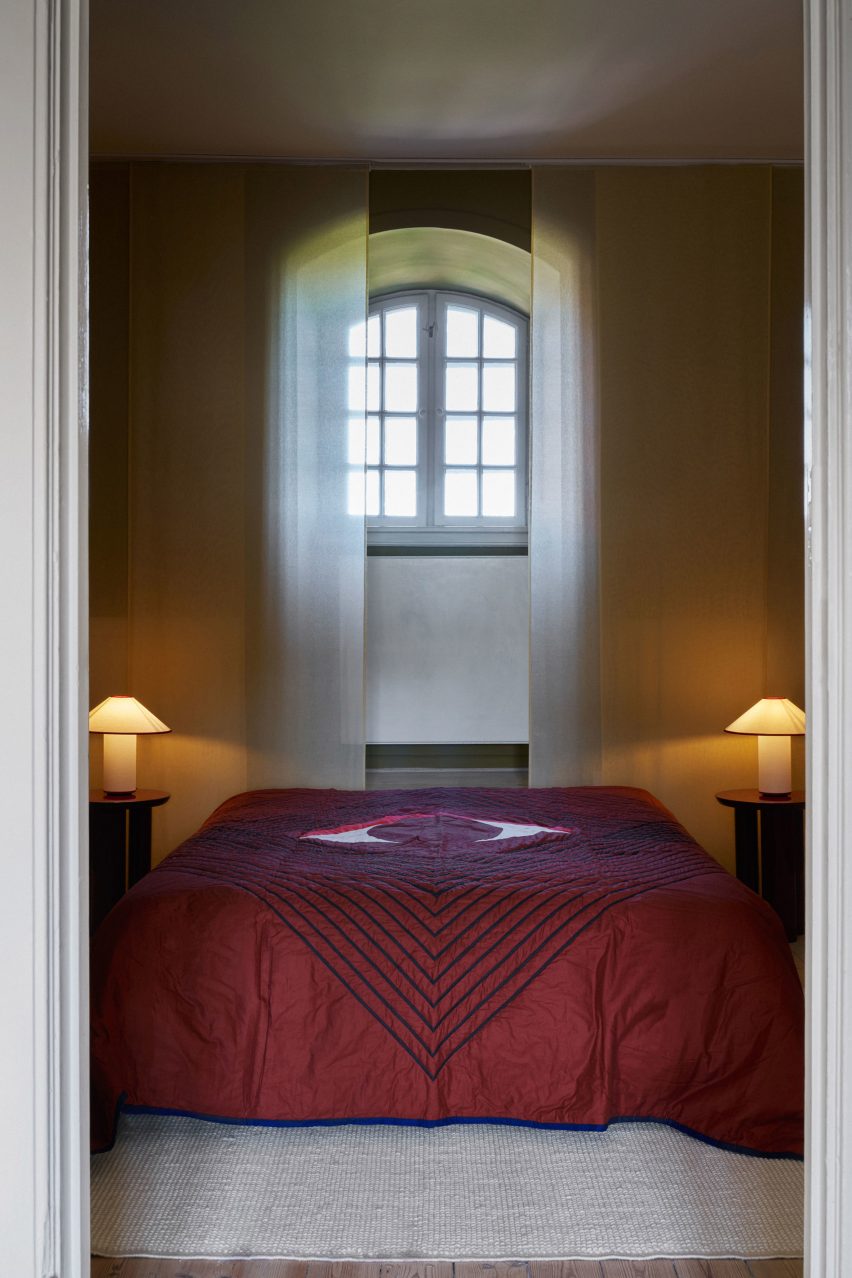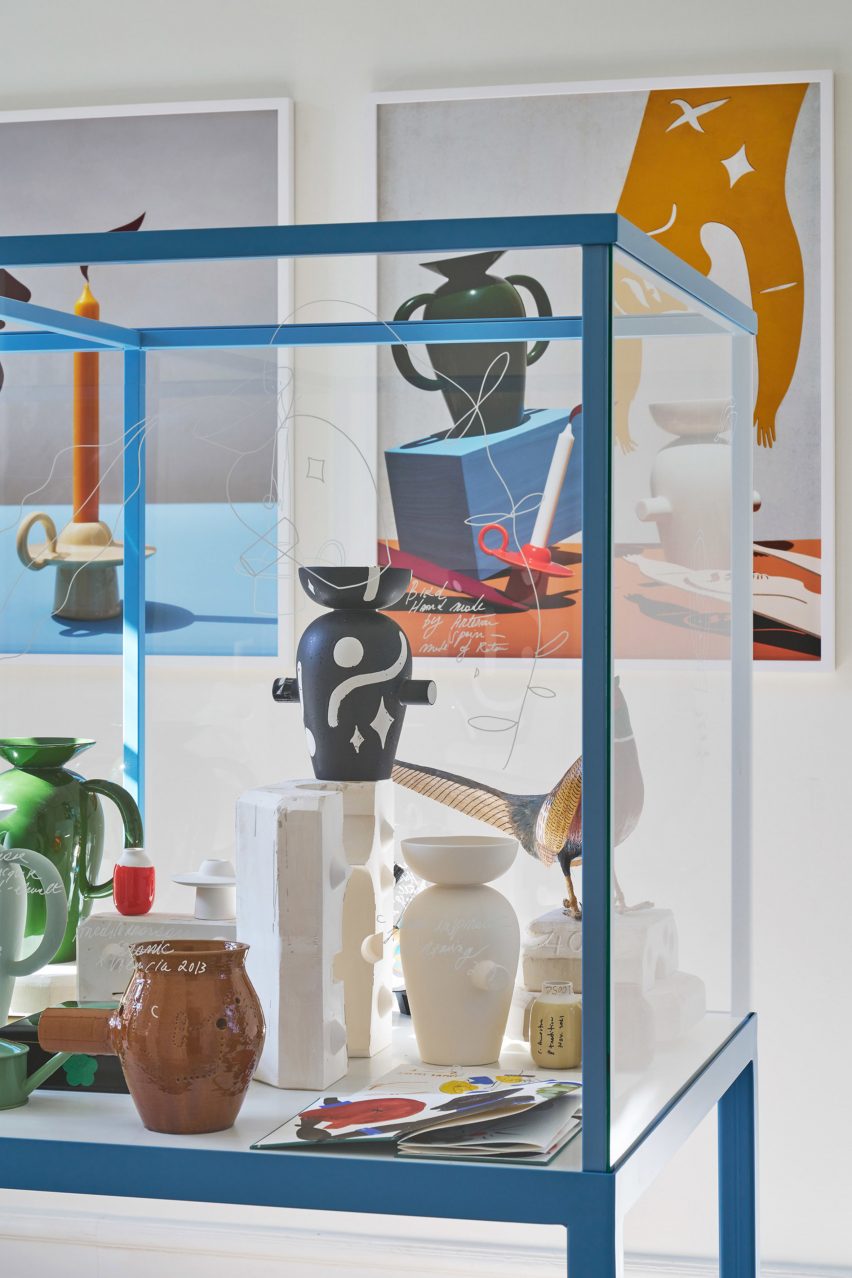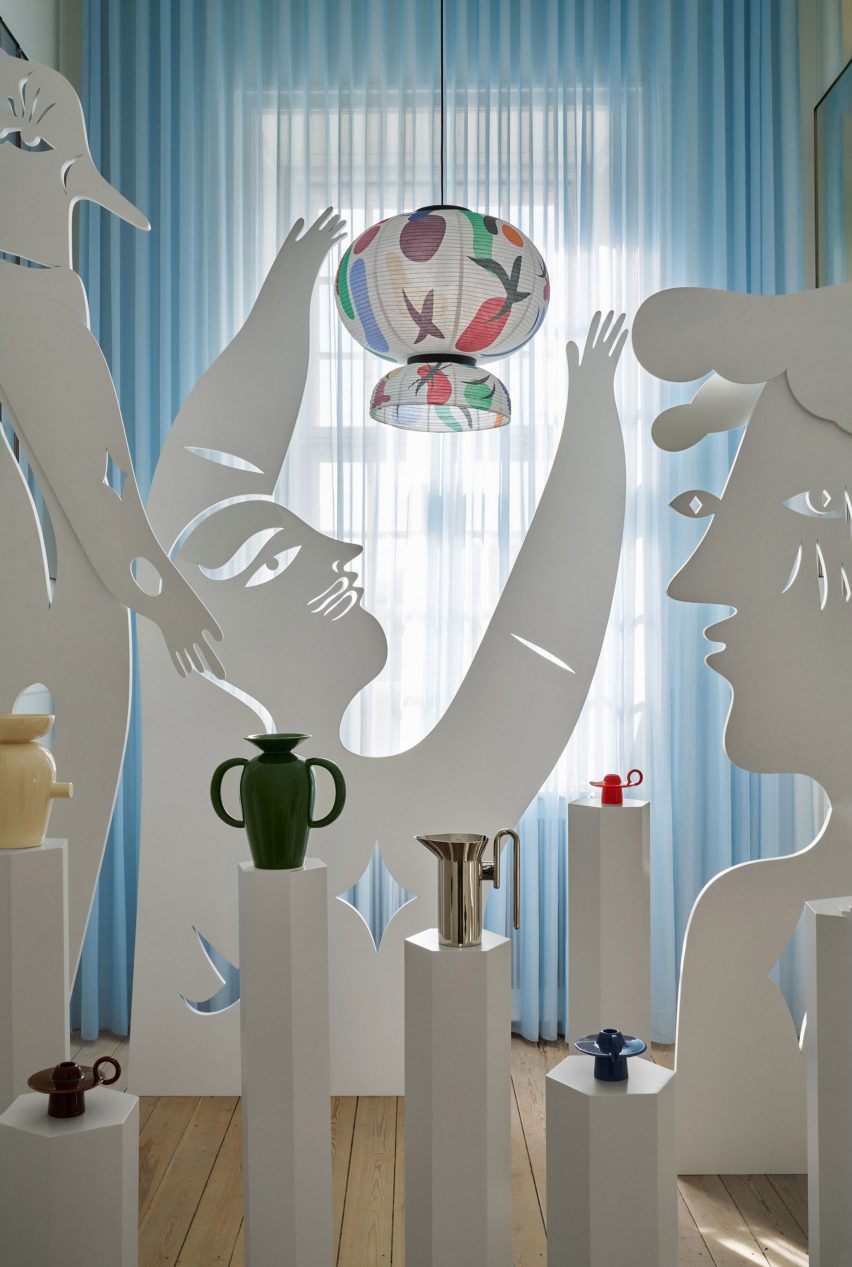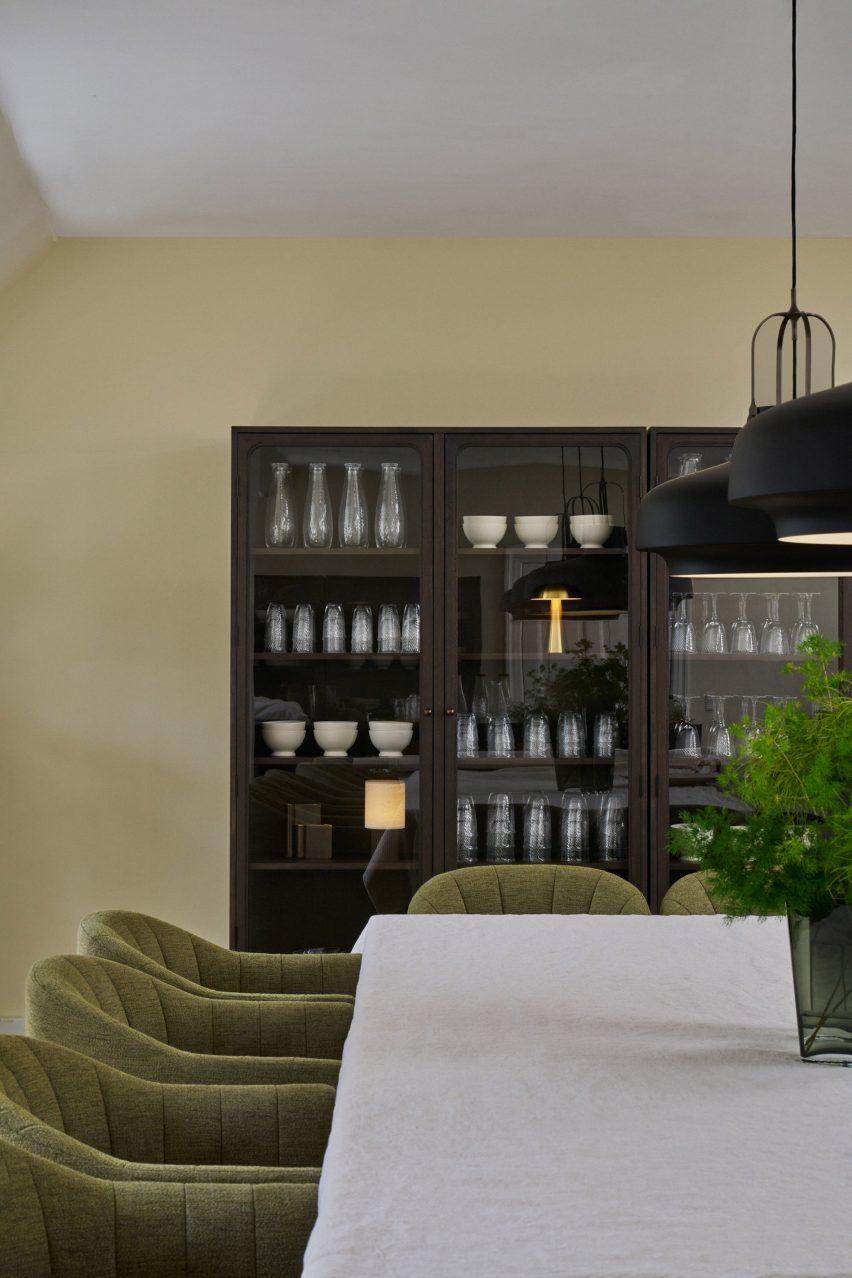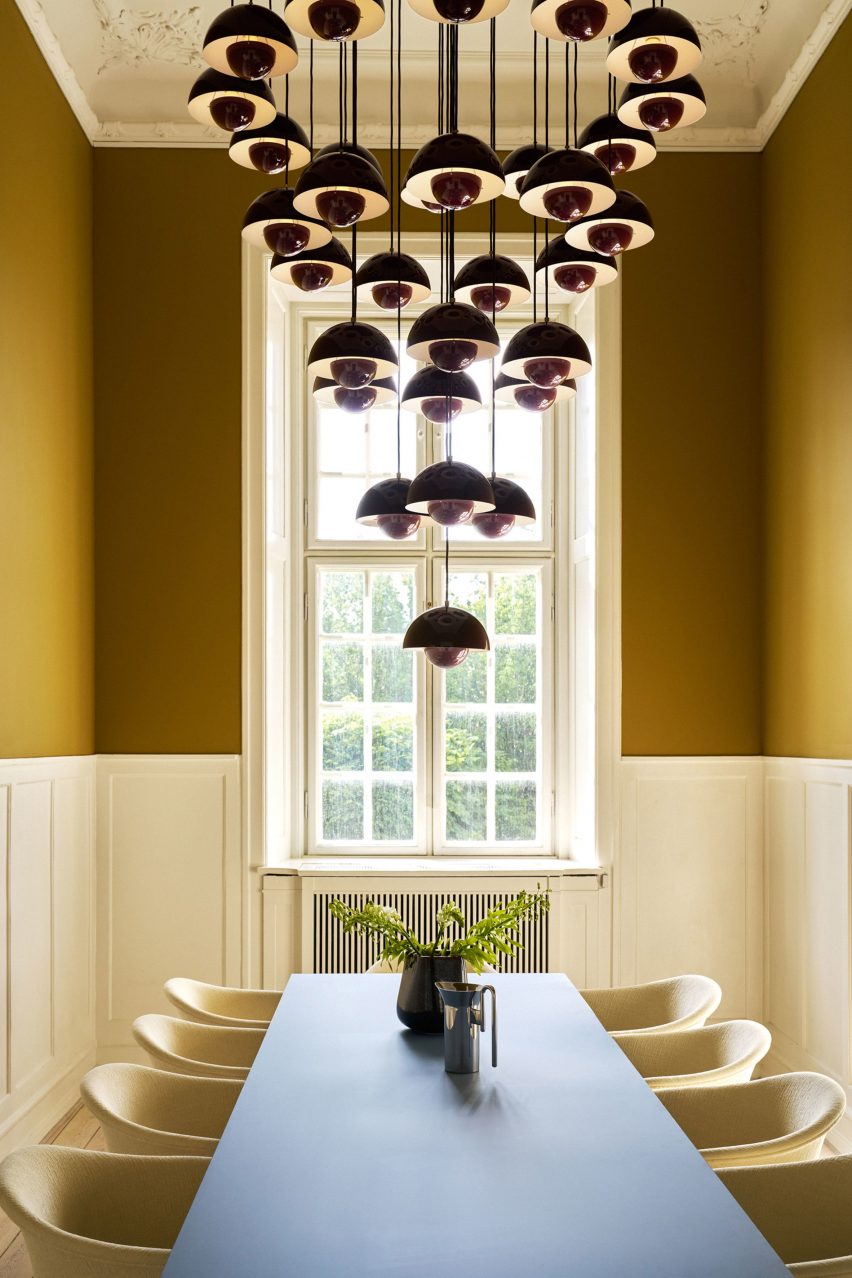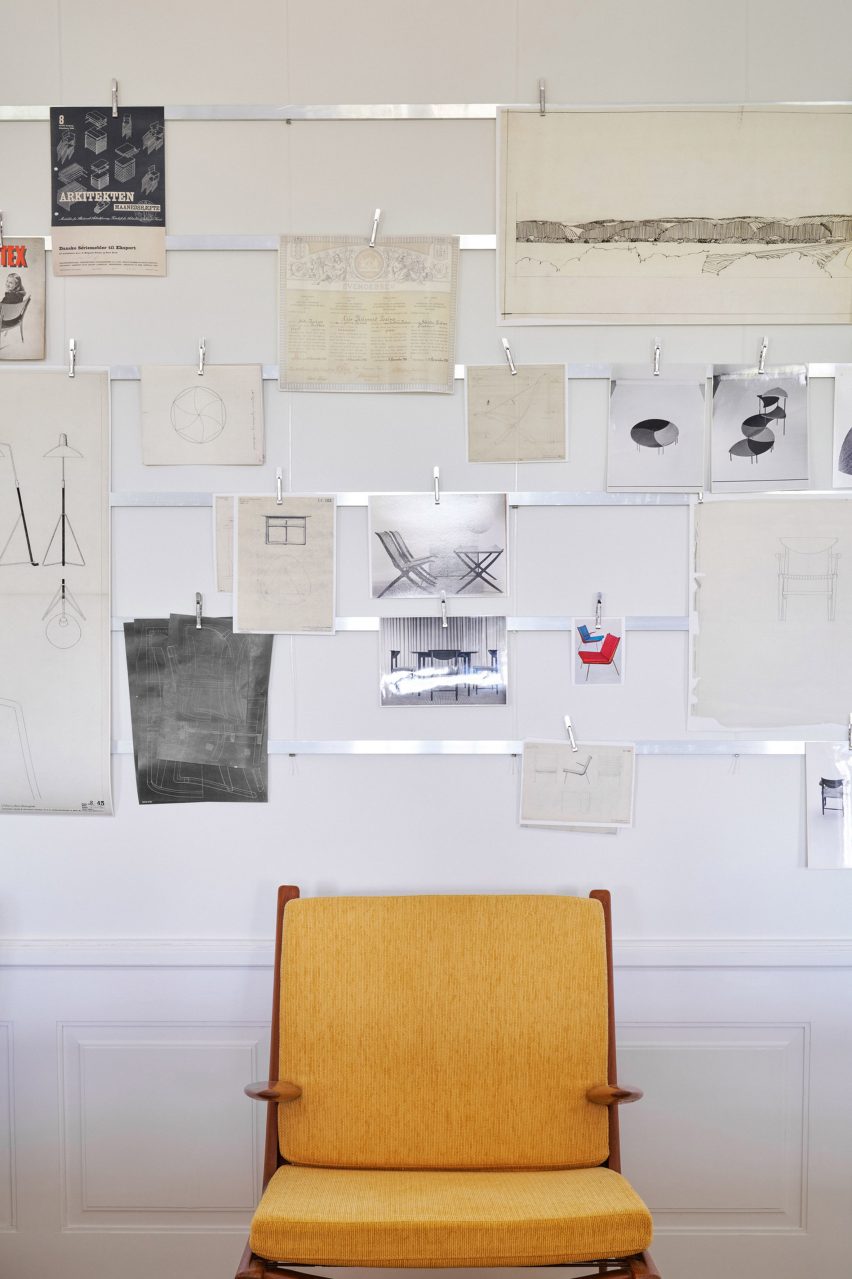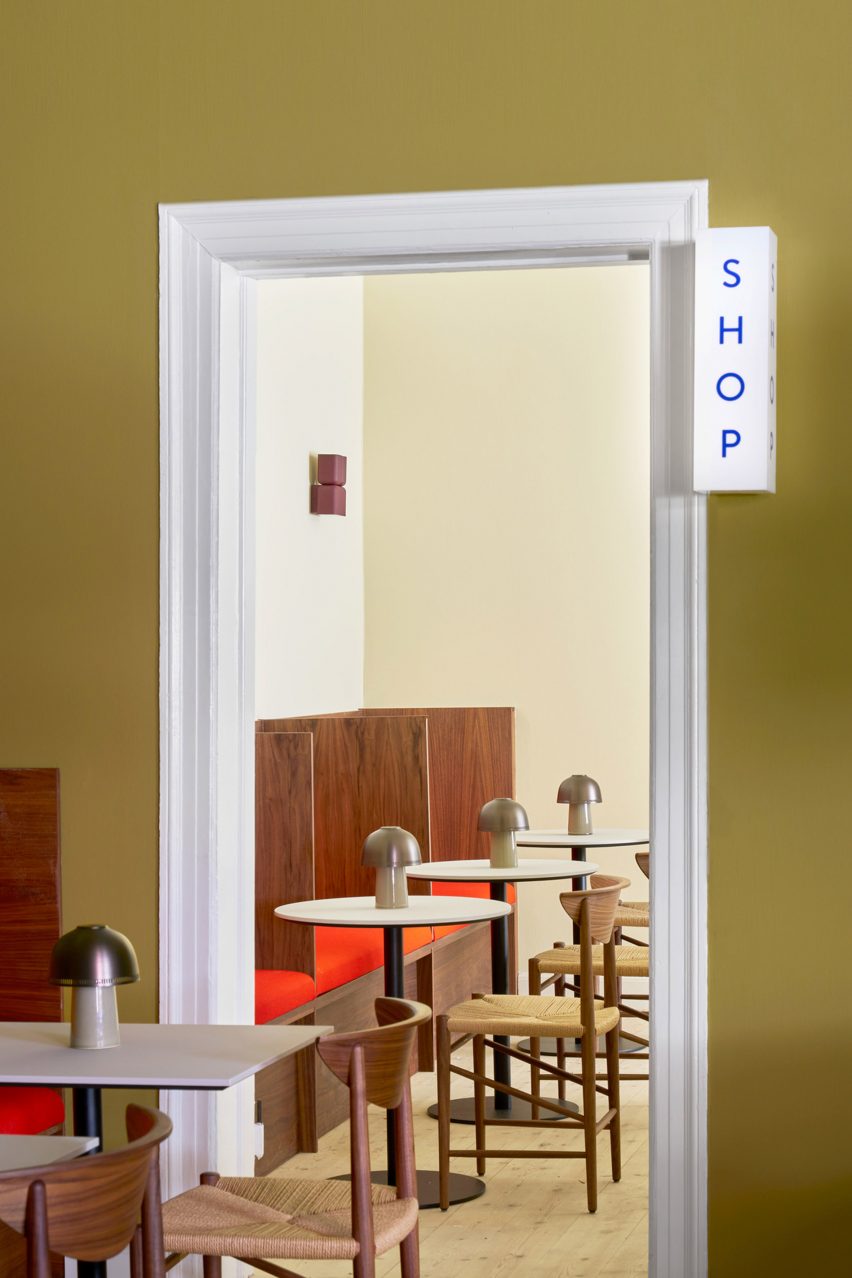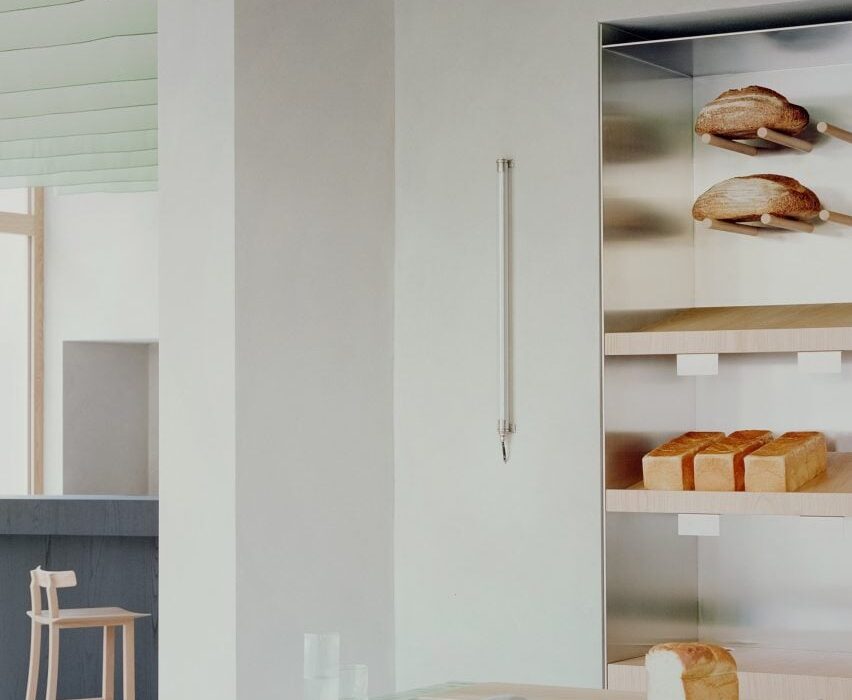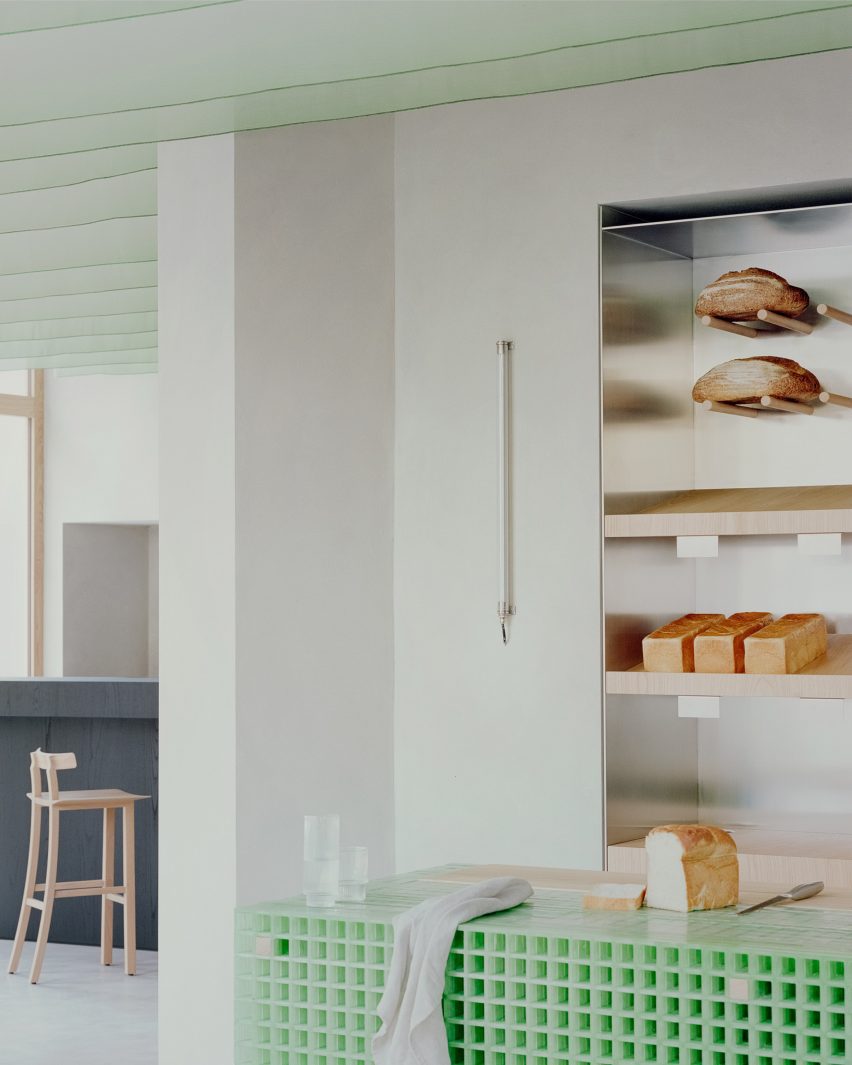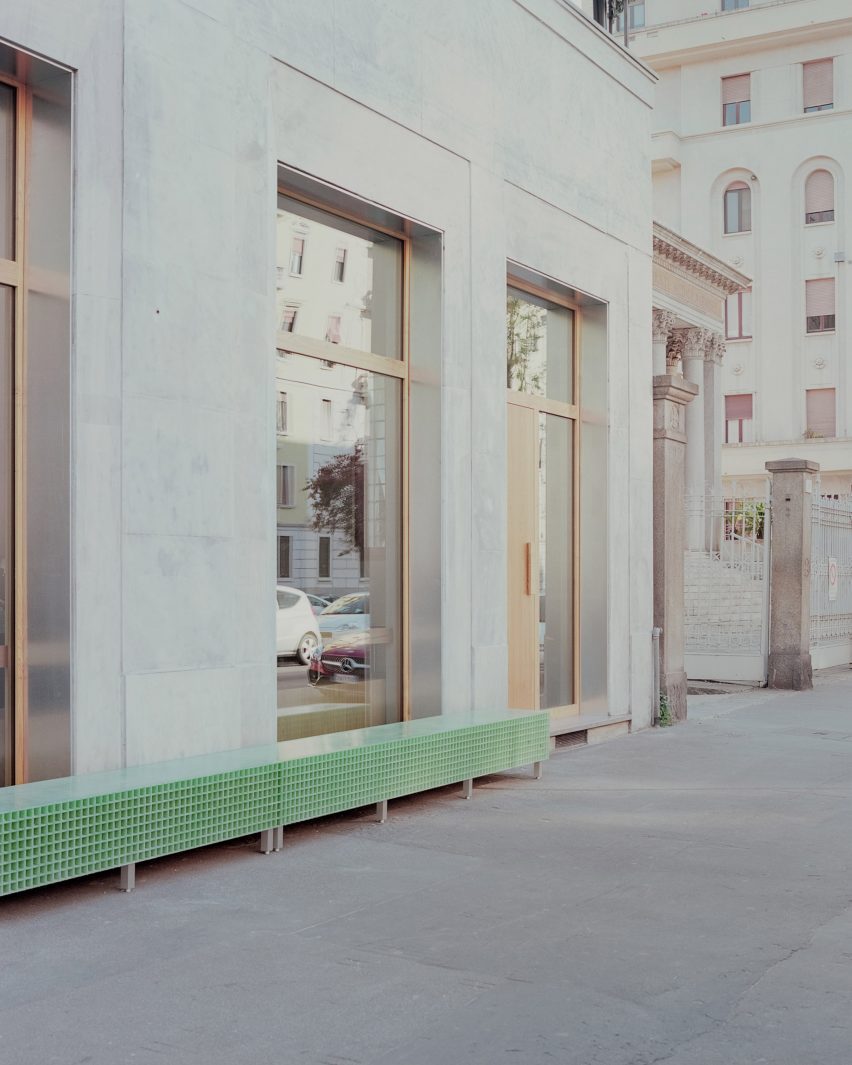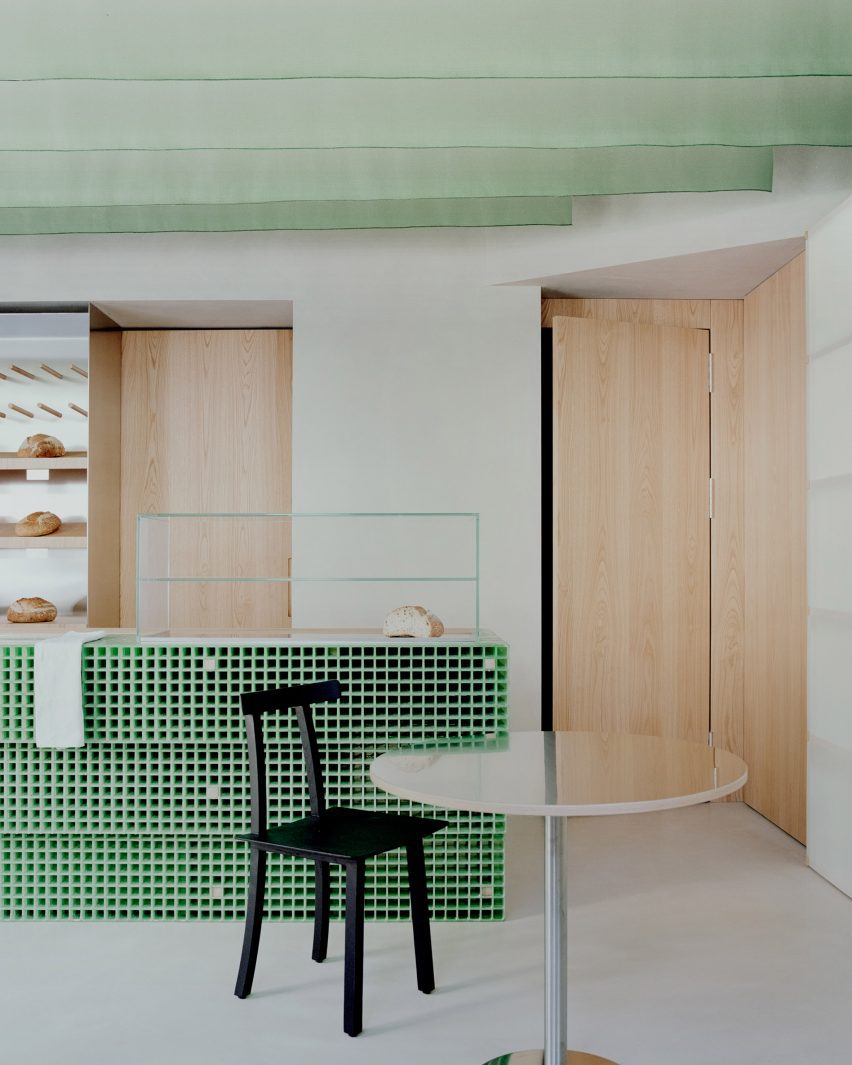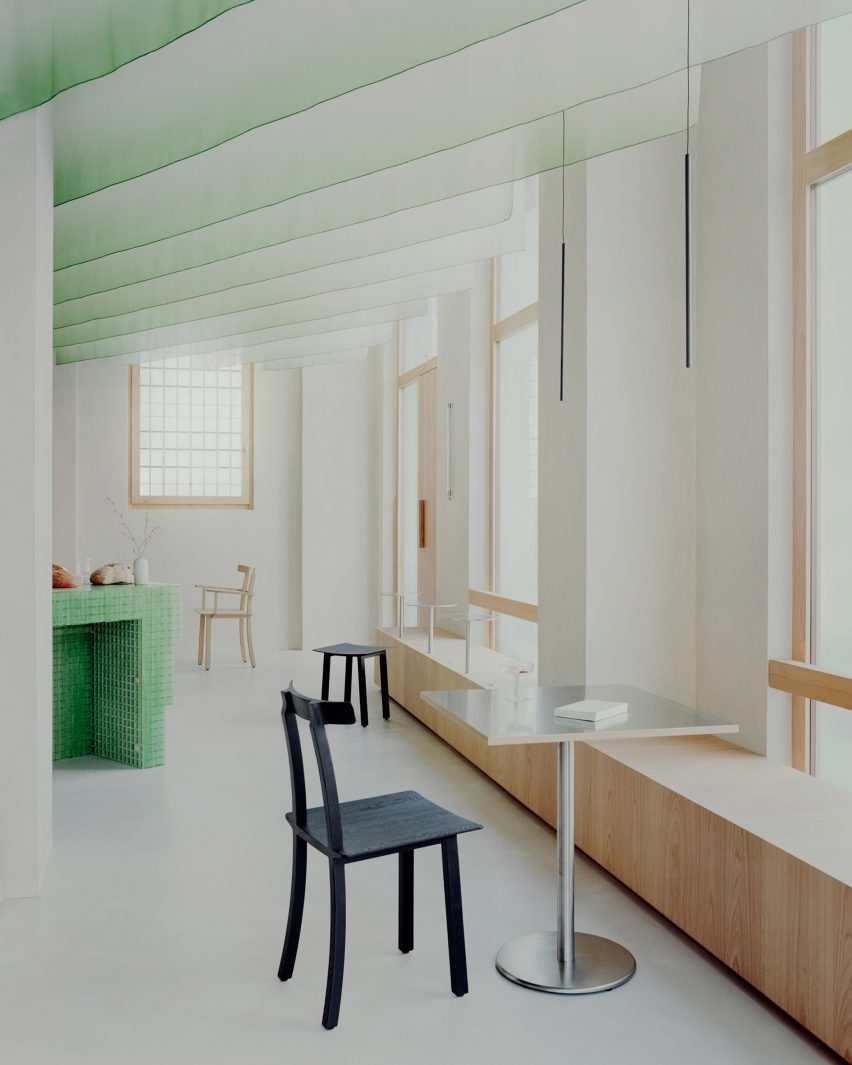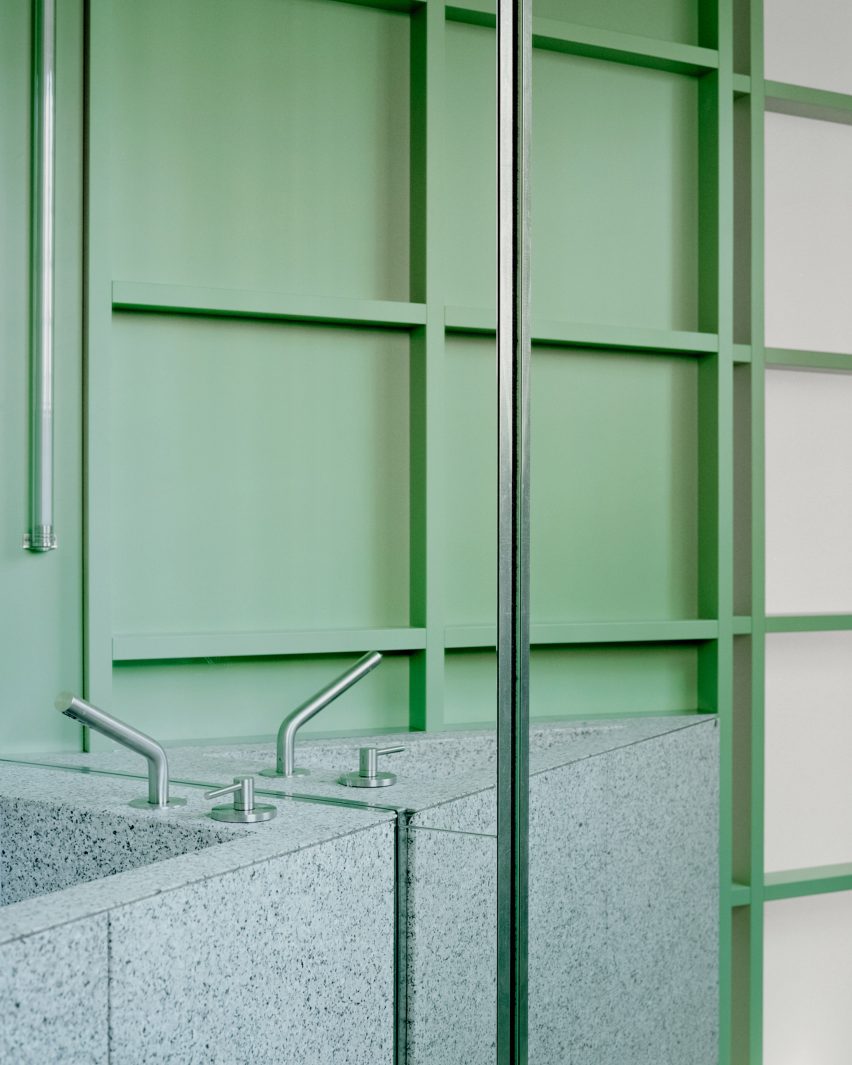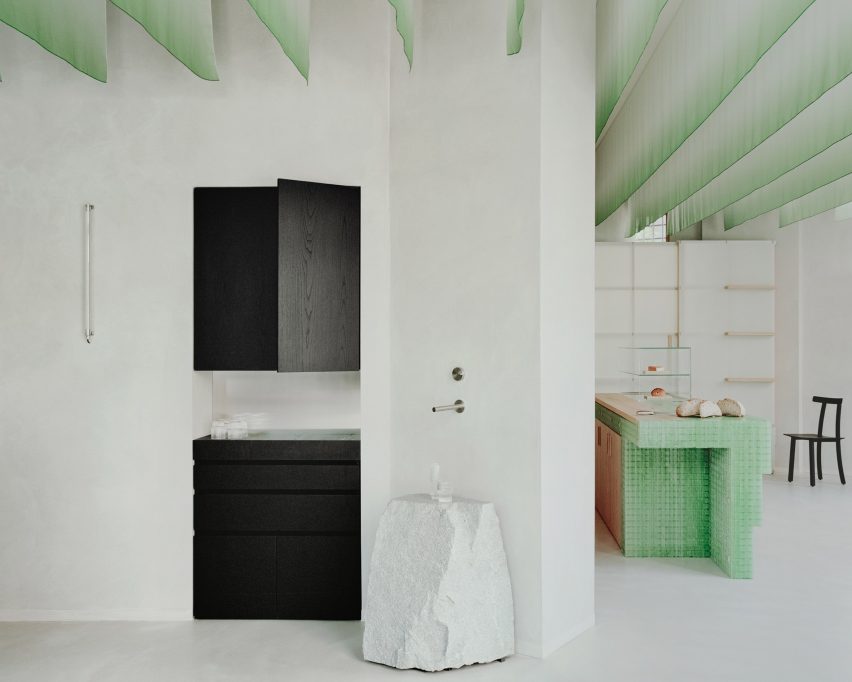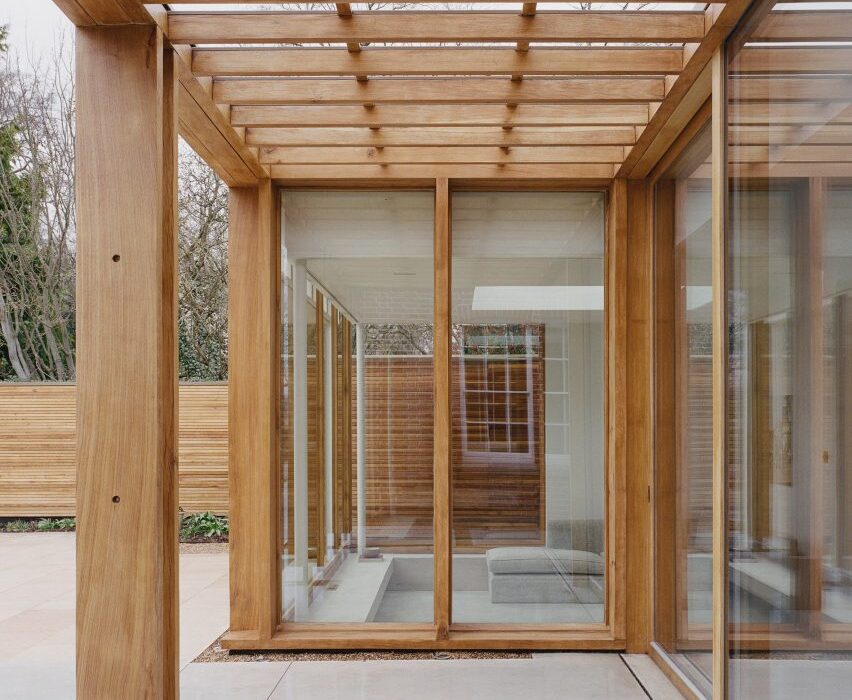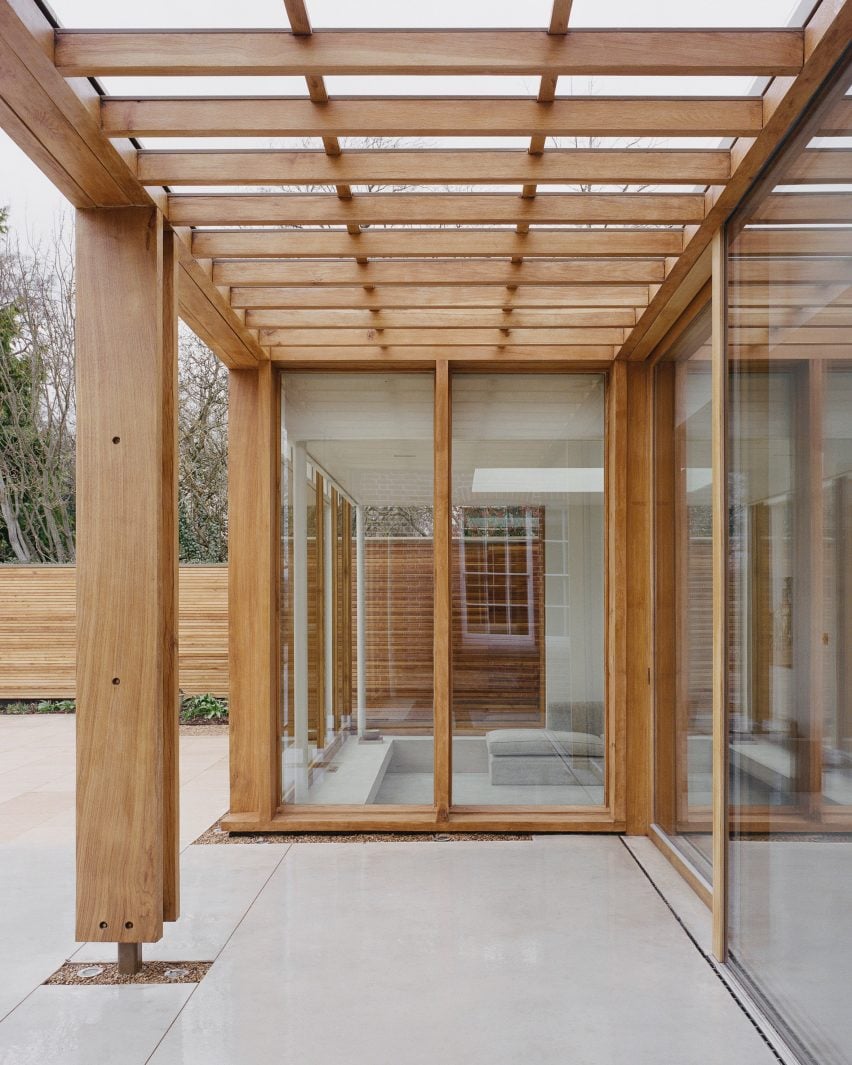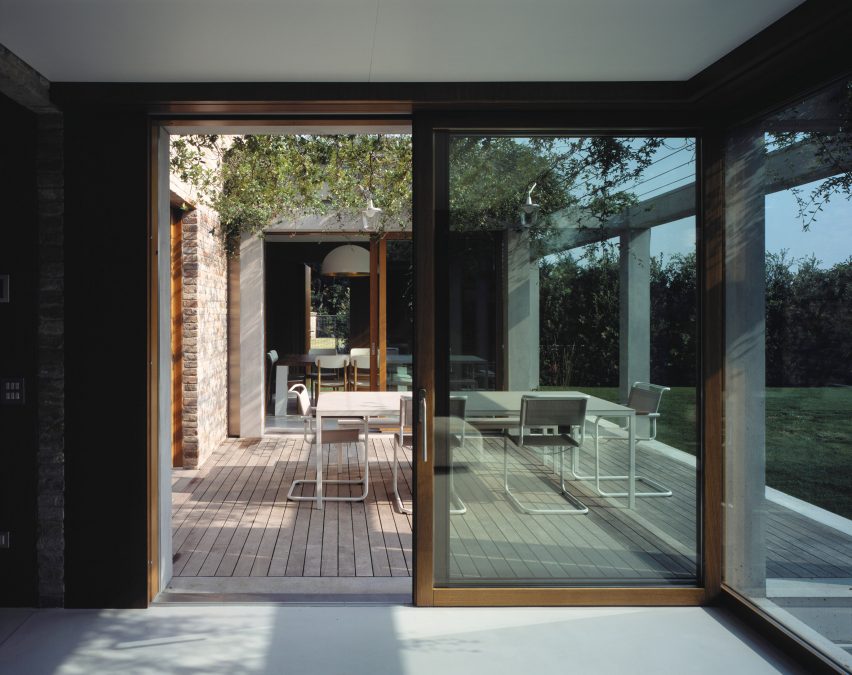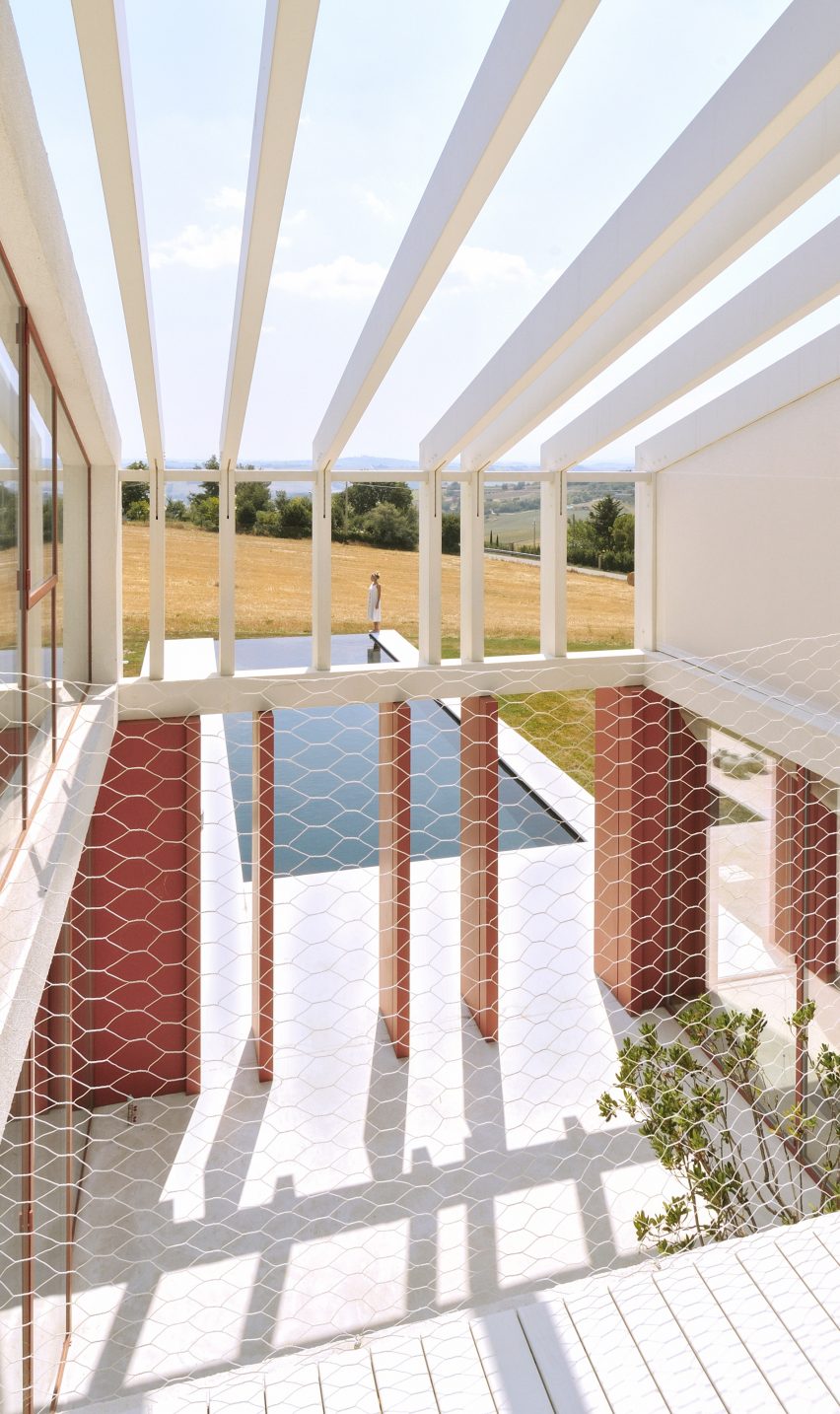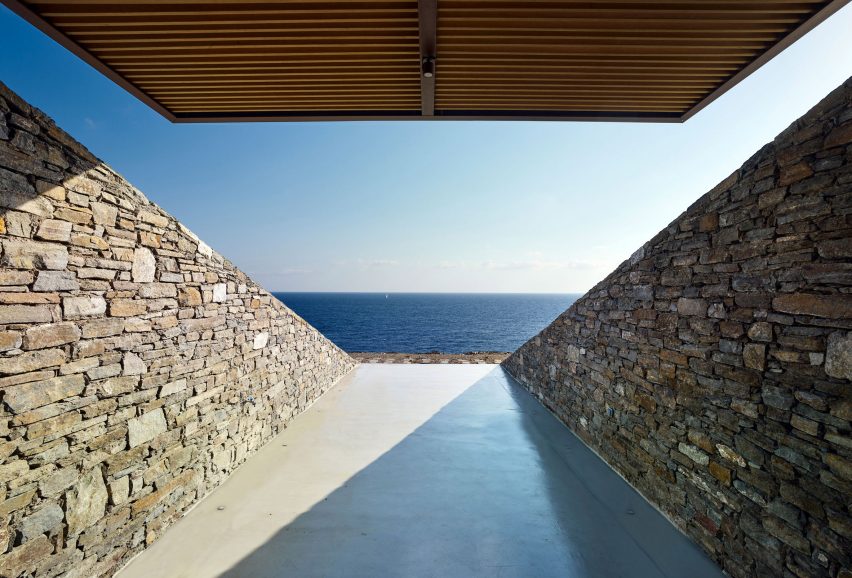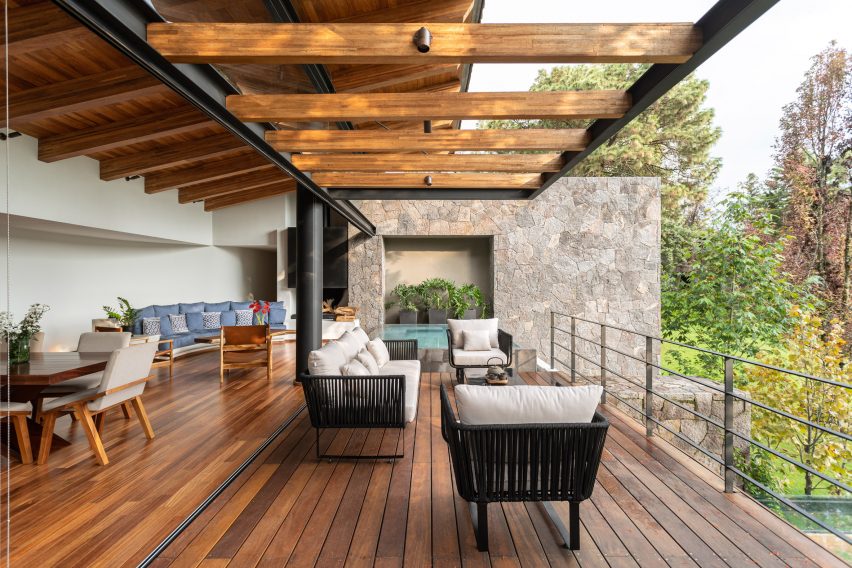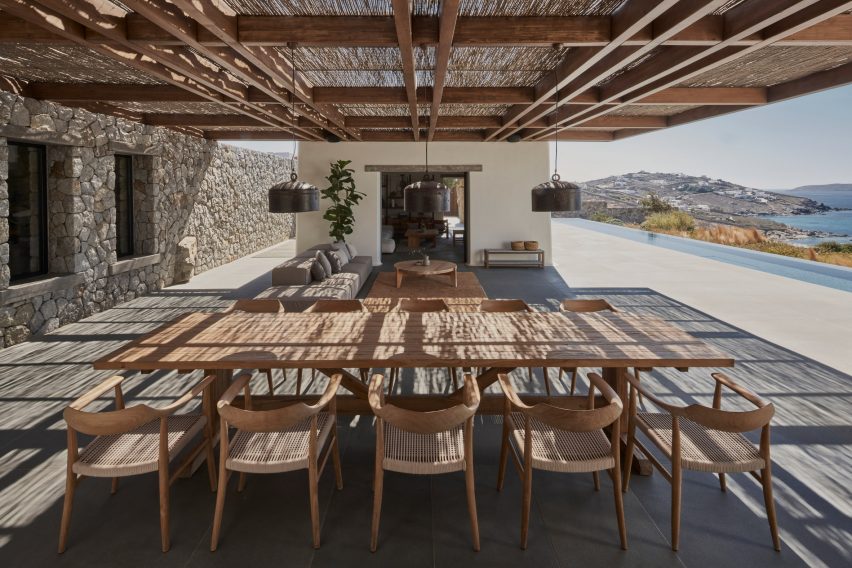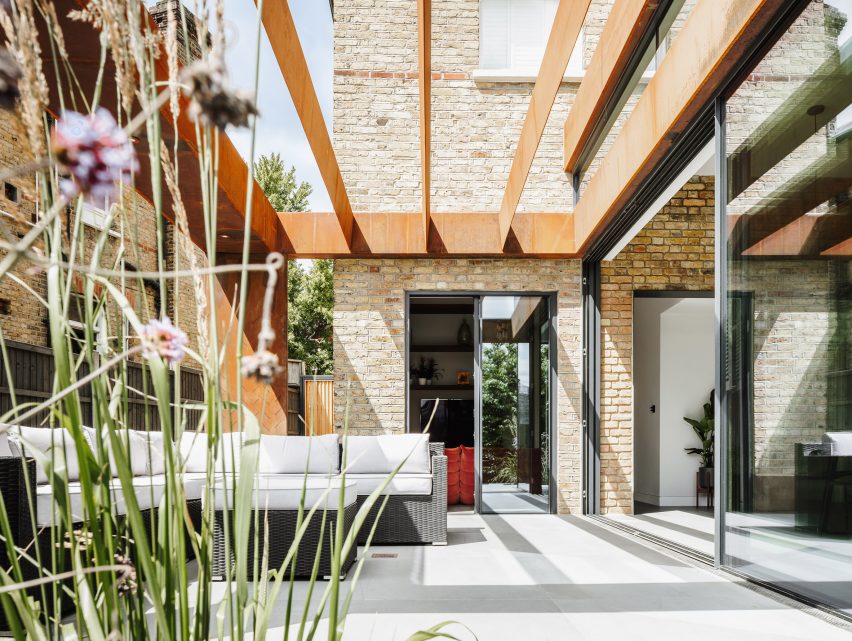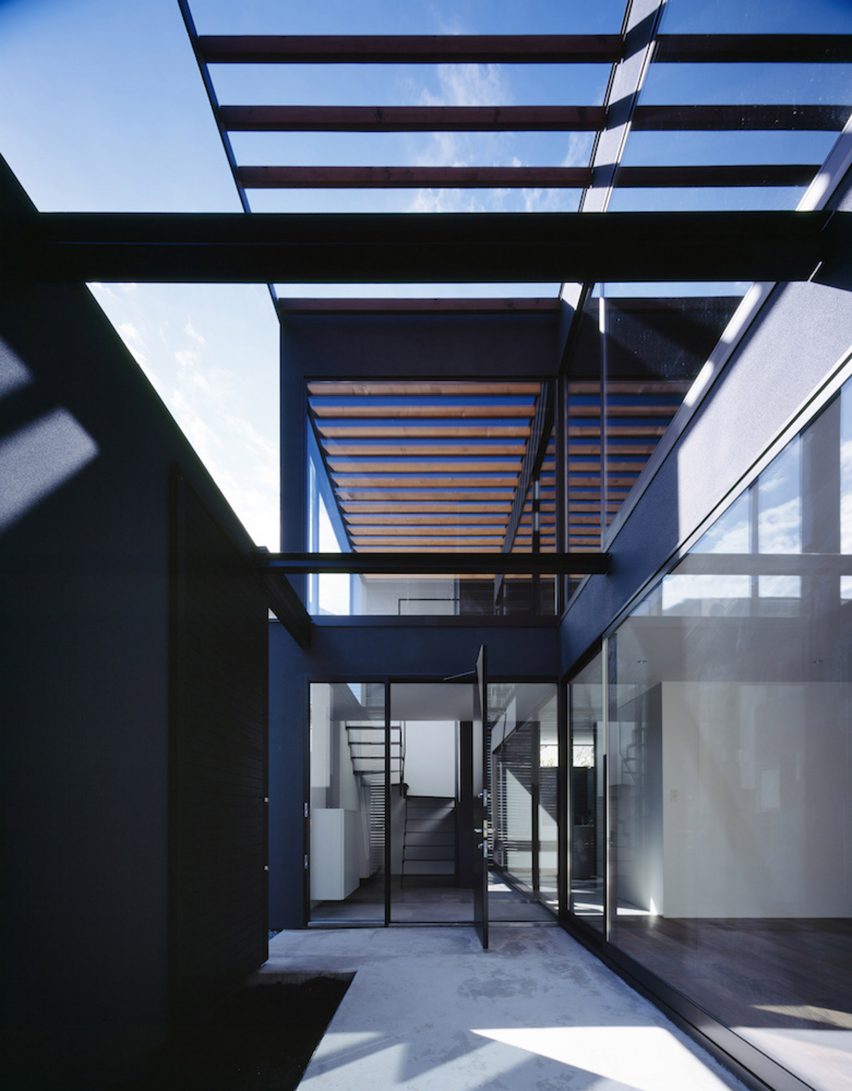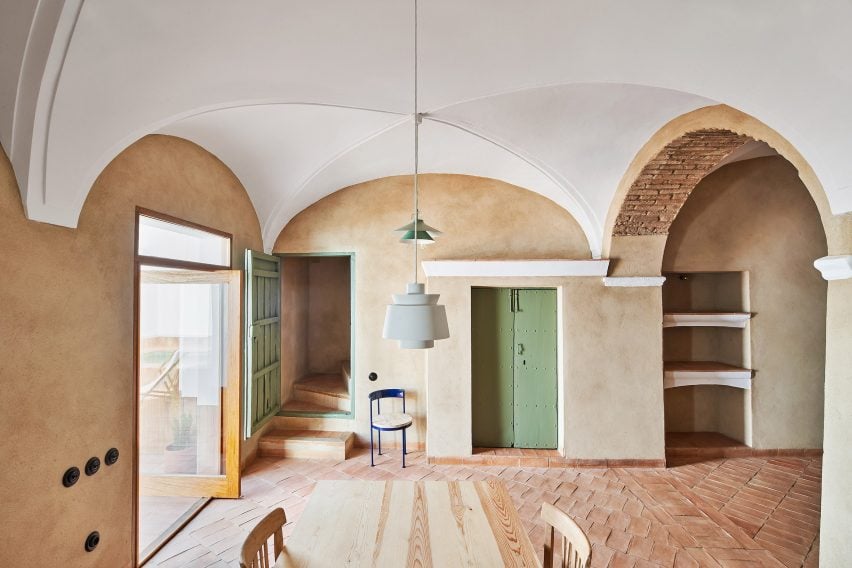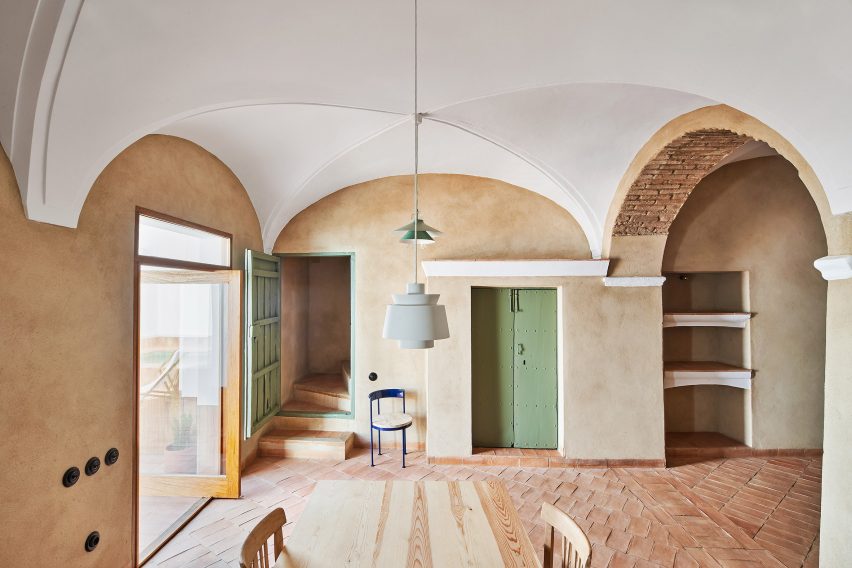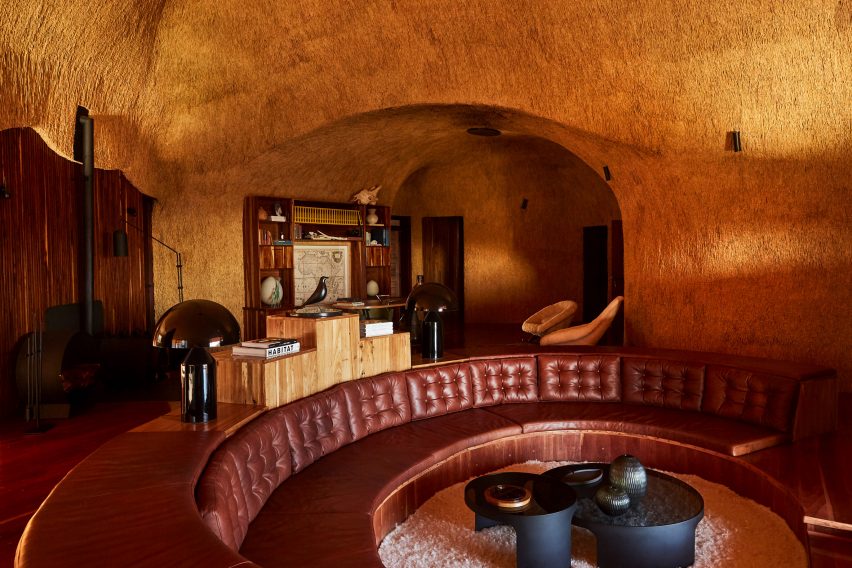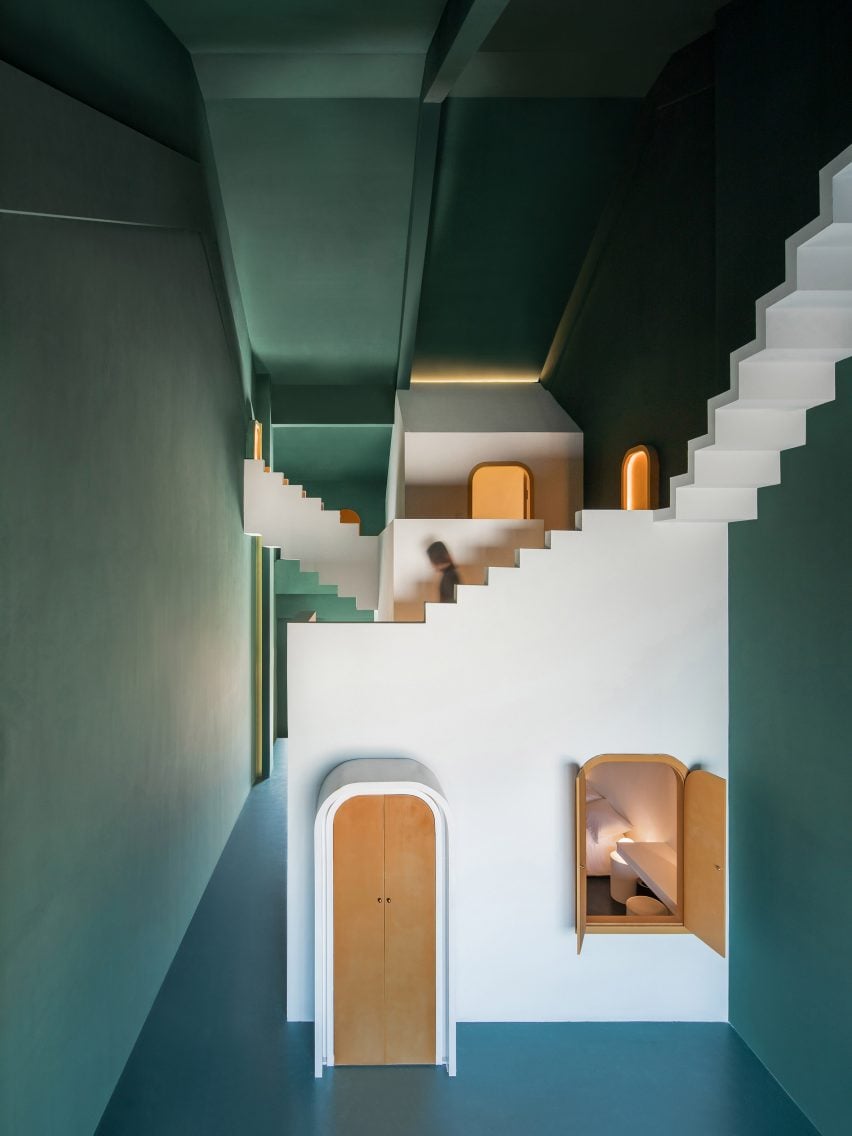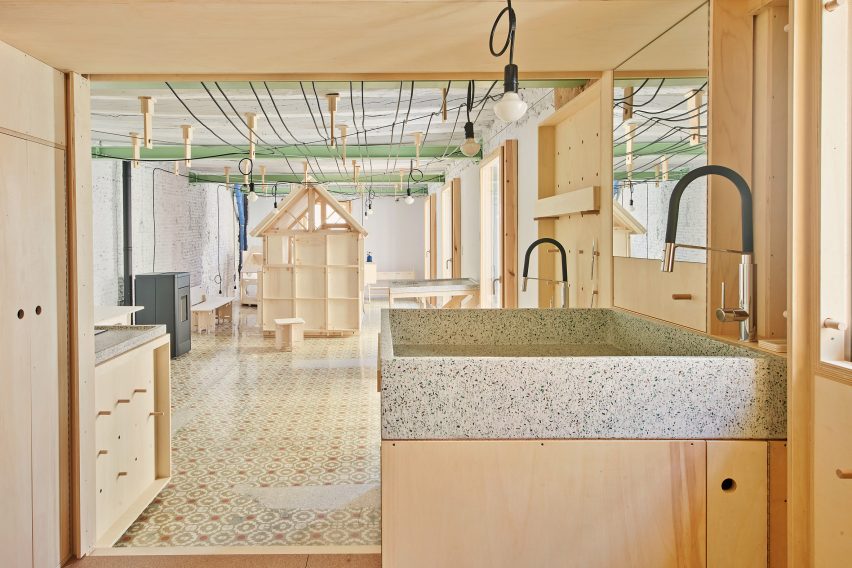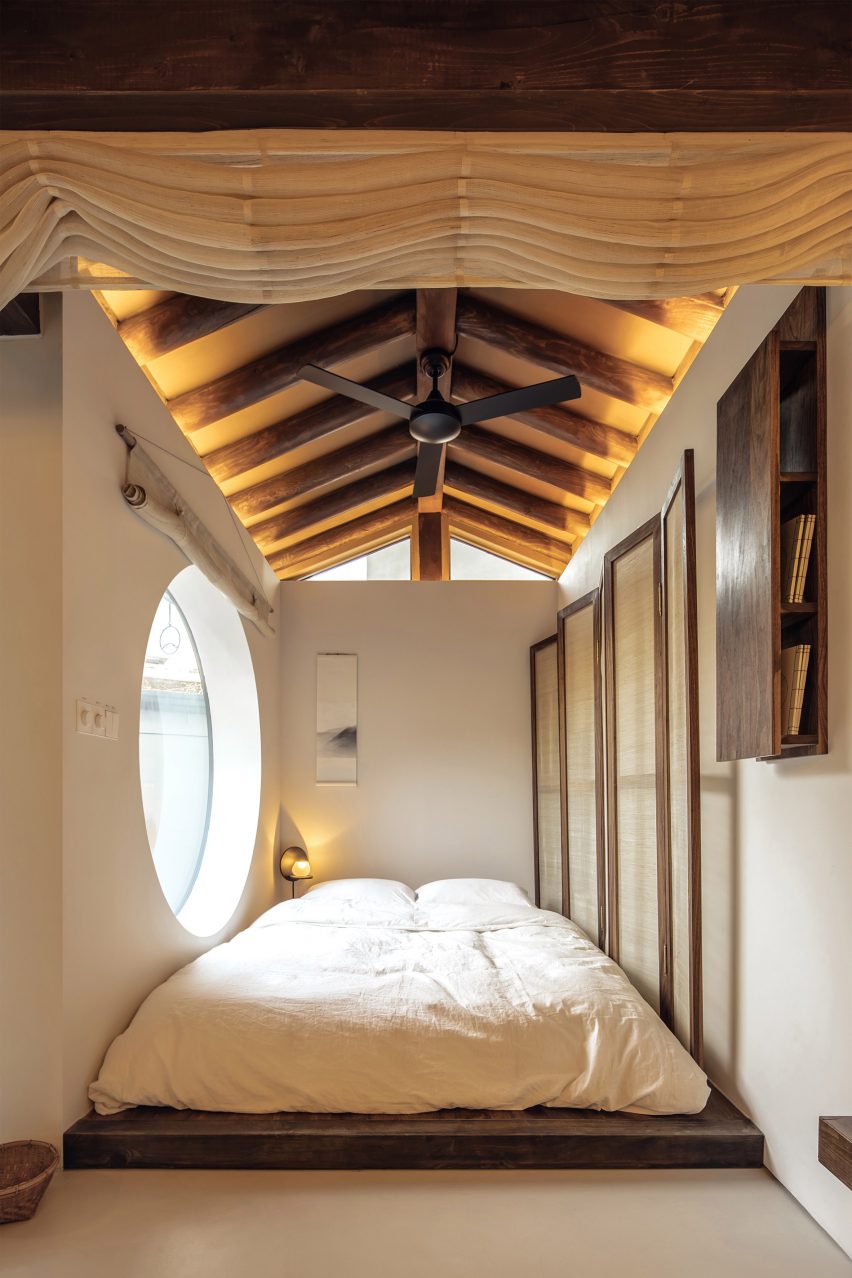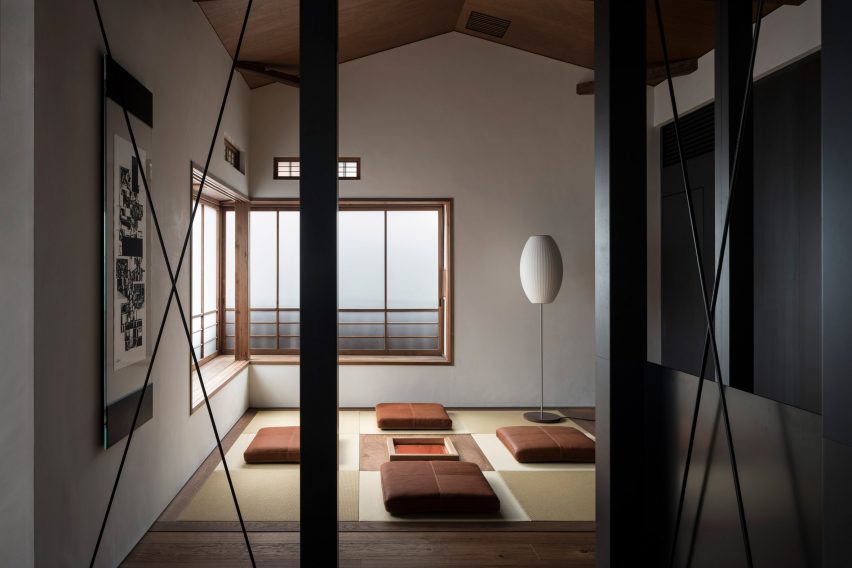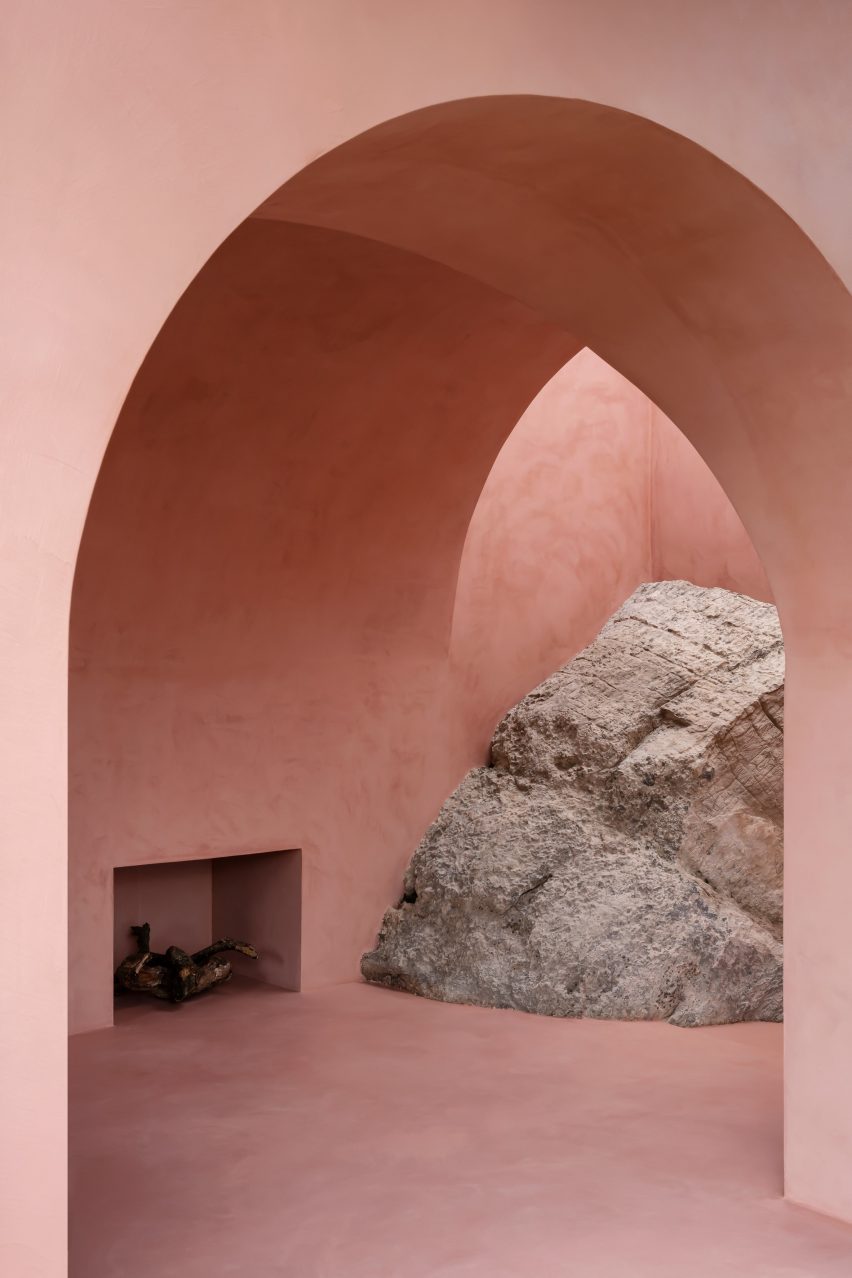Dog-friendly London club refurbished with giant 3D dachshund relief
Dog-friendly private members’ club George in London has been refurbished by restaurateur Richard Caring with David Hockney murals and Mayfair’s largest dining terrace.
The revamped club was designed to be dog-friendly throughout as well as displaying a large collection of dog-related artwork.
British painter Hockney created a mural for the dining room that sits alongside other original works of his, while London sculptor Jill Berelowitz has crafted a giant sculptural relief of a dachshund on the stairs descending to The Hound Club in the basement.
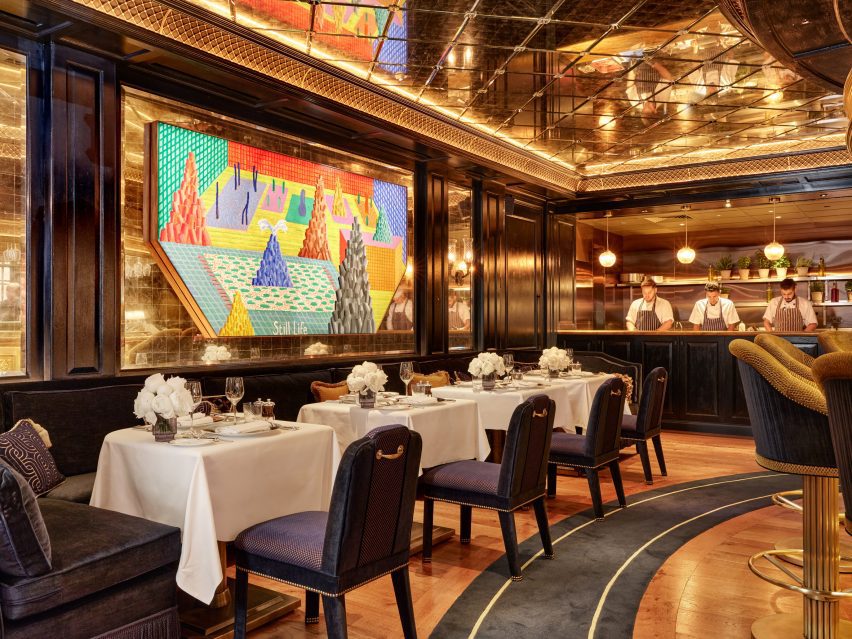
George was designed to be “a home away from home” for its members and their pets, Caring told Dezeen.
It was painted navy blue and features expansive navy awnings over an outdoor dining terrace that is the now the largest in Mayfair, providing space for guests and their pets.
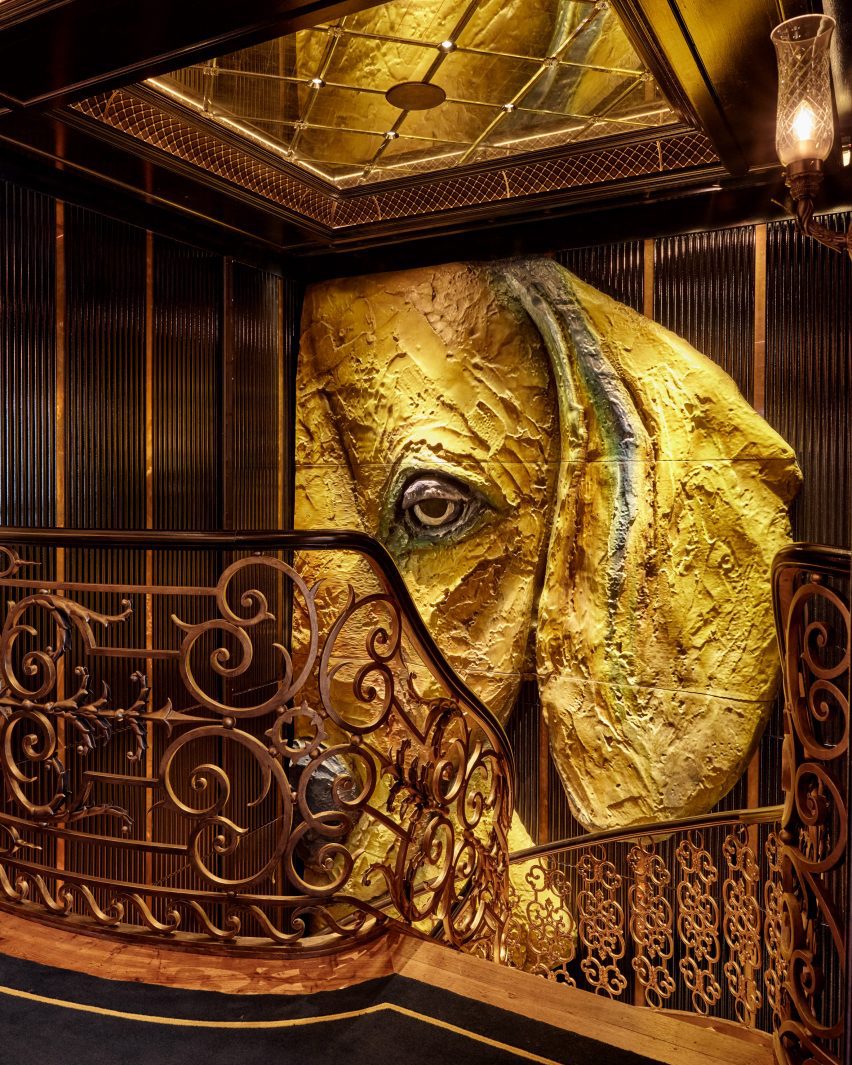
Named after the club founder Mark Birley’s own dachsund, the George has been refurbished as “an oasis for both members and their four-legged friends – continuing its legacy as London’s most dog friendly club”.
Served from the revamped open kitchen, which has been clad in copper panels, a menu of snacks has been curated just for the canine guests, which includes “dog caviar”.
The richly decorated interiors were painted a dark navy and furnished with bespoke furniture made in-house by The Birley Clubs’ design team.
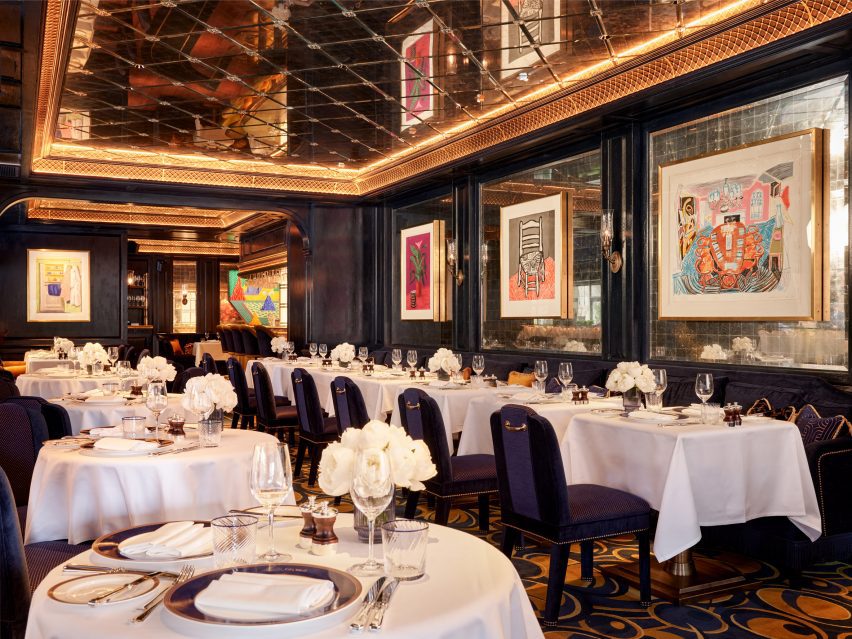
A circular bar, embellished with ornate metal work, separates the two dining rooms. Metal latticework cornicing echoes the level of decoration and detail throughout the scheme.
Artworks hang in mirror-tiled wall panels, below similarly mirror-tiled ceiling recesses.
A private dining room seats 16 and showcase works from Hockney’s iPad series, such as his 2011 work The Arrival of Spring in Woldgate.

Berelowitz’s dachschund sculpture dominates the main stairwell. The work was cast in bronze and patinated to match the club’s interior palette. The sculpture measures five by three metre and weighs 1.5 tons.
The navy ground floor area leads to a burgundy red basement that houses The Hound Bar. An Art Deco theme dictated the use of antique brass and fluted mahogany panels for the bar.
More mirrored glass has been used on columns and doorways almost to the effect of a hall of mirrors, creating an after-dark, subterranean feeling.
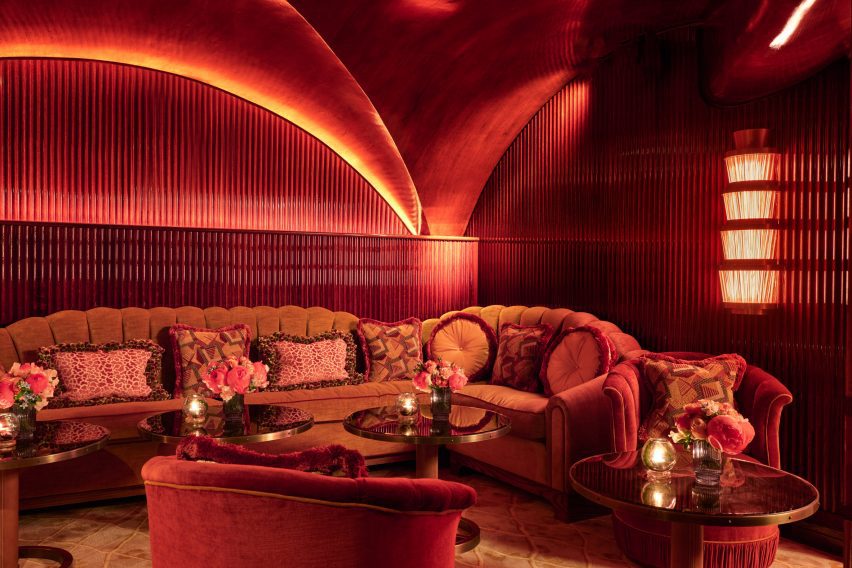
Highly polished mahogany was used to clad the vaulted ceilings and the same fluted panels from the bar were repeated in niches and around seating areas.
Caring, who designed the interiors of George with his team, previously commissioned Martin Brudnizki Design Studio to renovate his other London club, Annabel’s, in 2018.
He also worked with Martin Brudnizki Design Studio on the launch of Bacchanalia London, which features monumental sculptures by Damien Hirst.
Other restaurant interiors recently featured on Dezeen include nearby 20 Berkeley, also in Mayfair, where Pirajean Lees has created an Arts and Crafts-style interior, and an intimate cocktail lounge in Austin, USA, by Kelly Wearstler.
The photography is by Ryan Wicks and Milo Brown.

